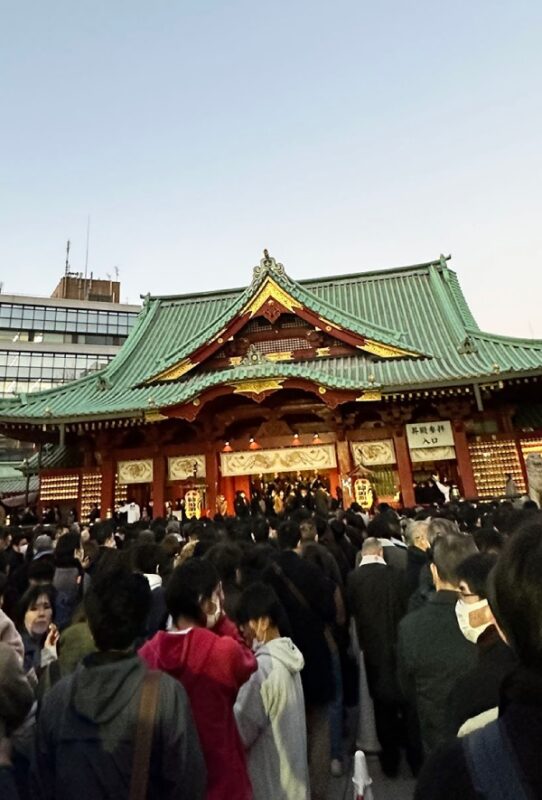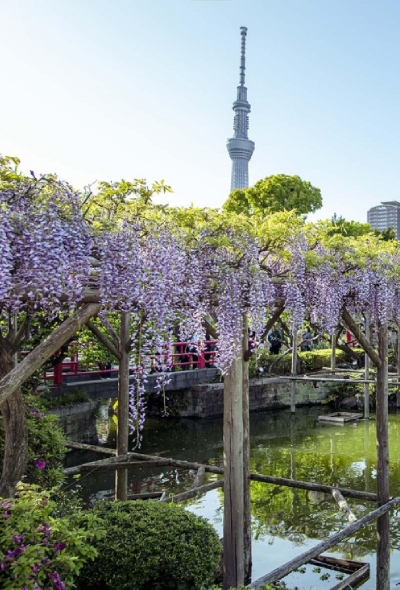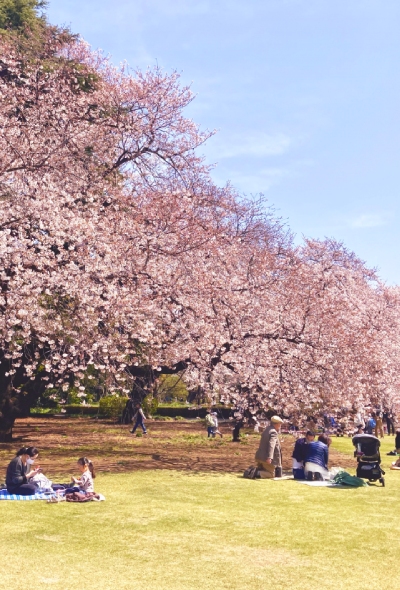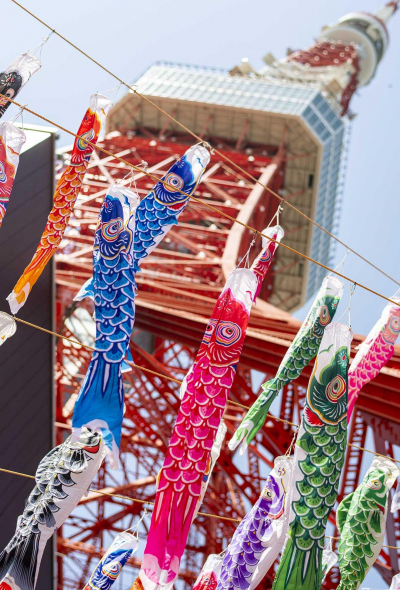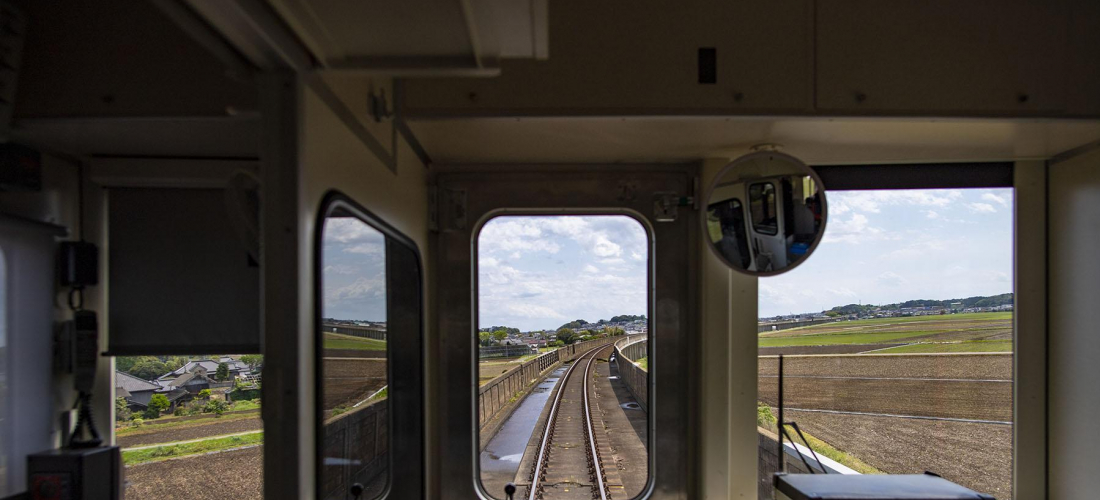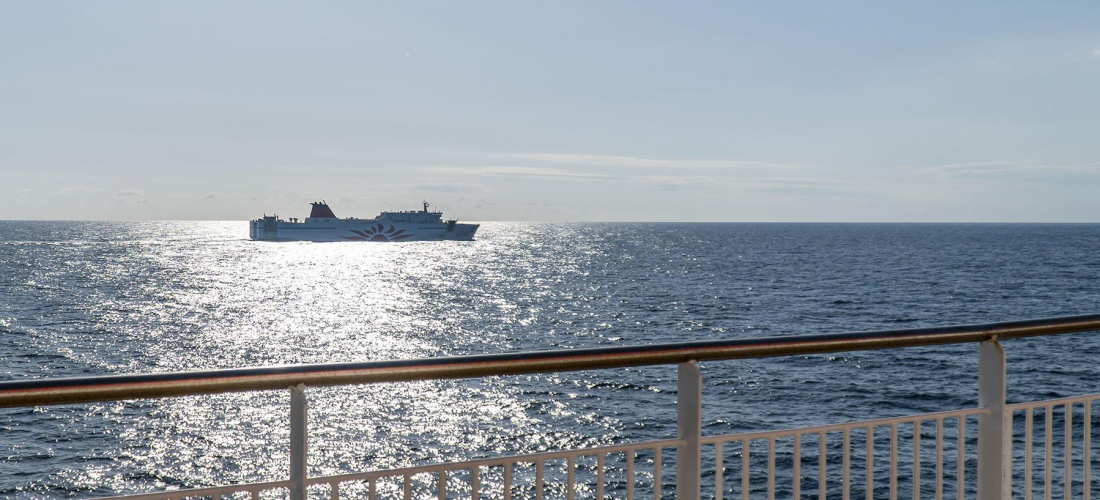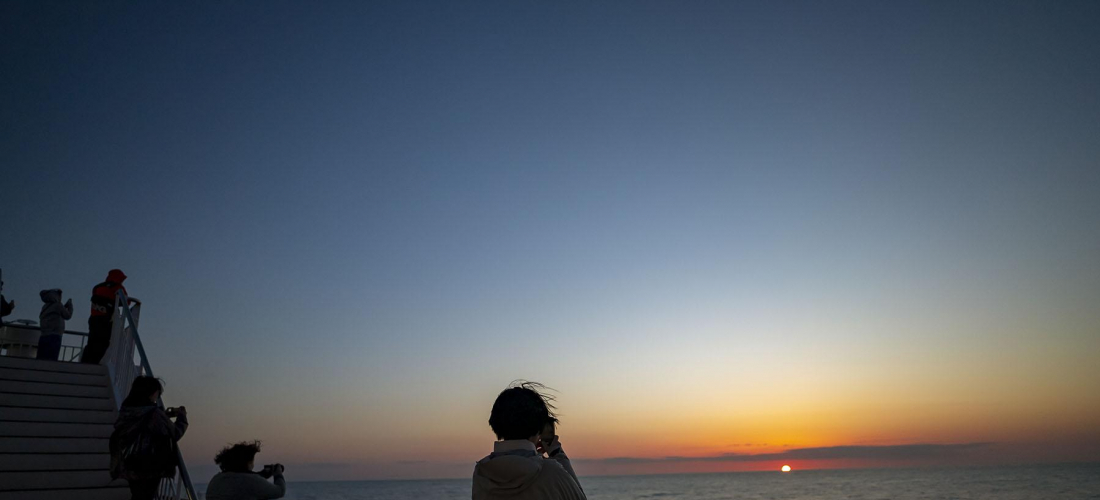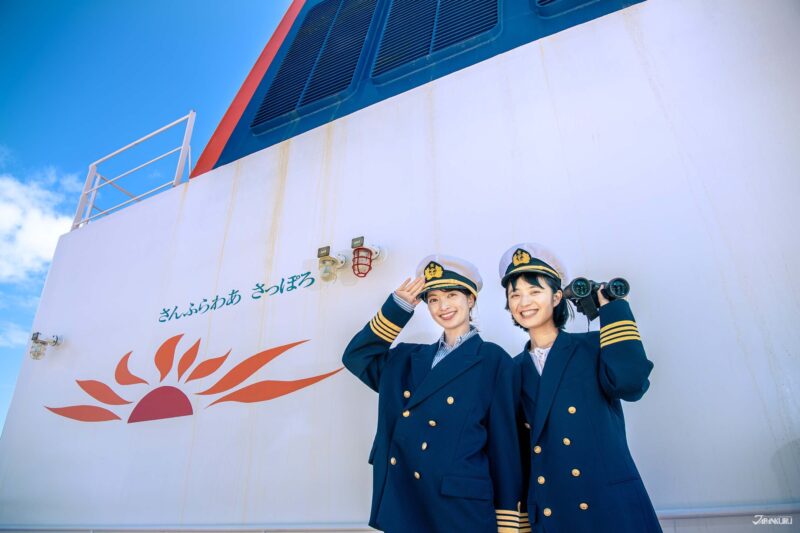
Tokyo to Hokkaido by Ferry • Enjoy a Picturesque Japanese Ferry Cruise on the Sunflower
This article contains sponsored content.
Want to get to Hokkaido from Tokyo without wasting a minute at the airport? Try a trip on the Ferry Sunflower for comfortable rooms, reliably good food and facilities, plus the kinds of unique experiences only found on a Japanese ferry ship!
CONTENTS
Taking the Ferry From Tokyo to Hokkaido
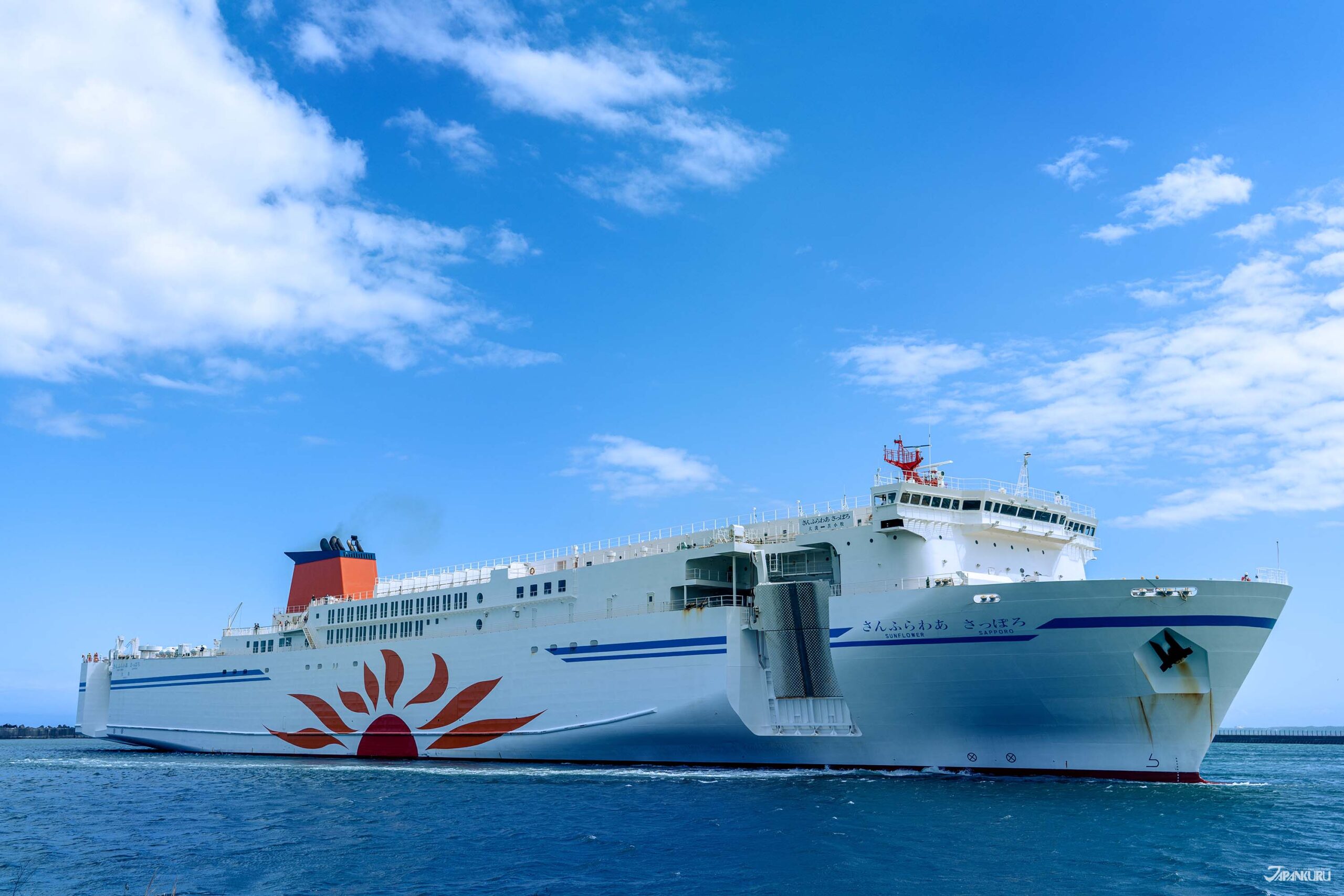
Tokyo is Japan’s must-see metropolis, and Hokkaido is Japan’s picturesque northernmost island, but since the two destinations are geographically far apart, it can be hard to plan a trip with both spots at once. Fortunately, there are a few ways to get from Tokyo to Hokkaido, and our very favorite is the Ferry Sunflower. Equipped like a moving hotel that glides along the water, the Sunflower has all the practical facilities you need for an overnight trip along the Japanese coastline, plus all the excitement of a scenic ocean cruise. Instead of an inconvenient slog, the trip to Hokkaido can actually be a highlight of your sightseeing itinerary!
Read on to find out how to get from Tokyo to Hokkaido, from reservations to boarding the ship and utilizing all the facilities on board, plus some recommendations in Furano and Biei once you arrive at your destination. Skip the trip to the airport, and try a night on the Sunflower to get to Hokkaido feeling rested and ready to go!
▶︎ MOL Ferry Sunflower (Tokyo Area ⇔ Hokkaido) Official Website (en)
From Tokyo to the Ferry Terminal
To get out of Tokyo and start your trip to Hokkaido, the first step is to head to the ferry terminal! The Sunflower departs from Oarai Port Ferry Terminal in Ibaraki Prefecture (neighboring Tokyo), so we’ve put together the easiest transportation options to get you there, by bus or train.
① Tokyo Station → Mito Station
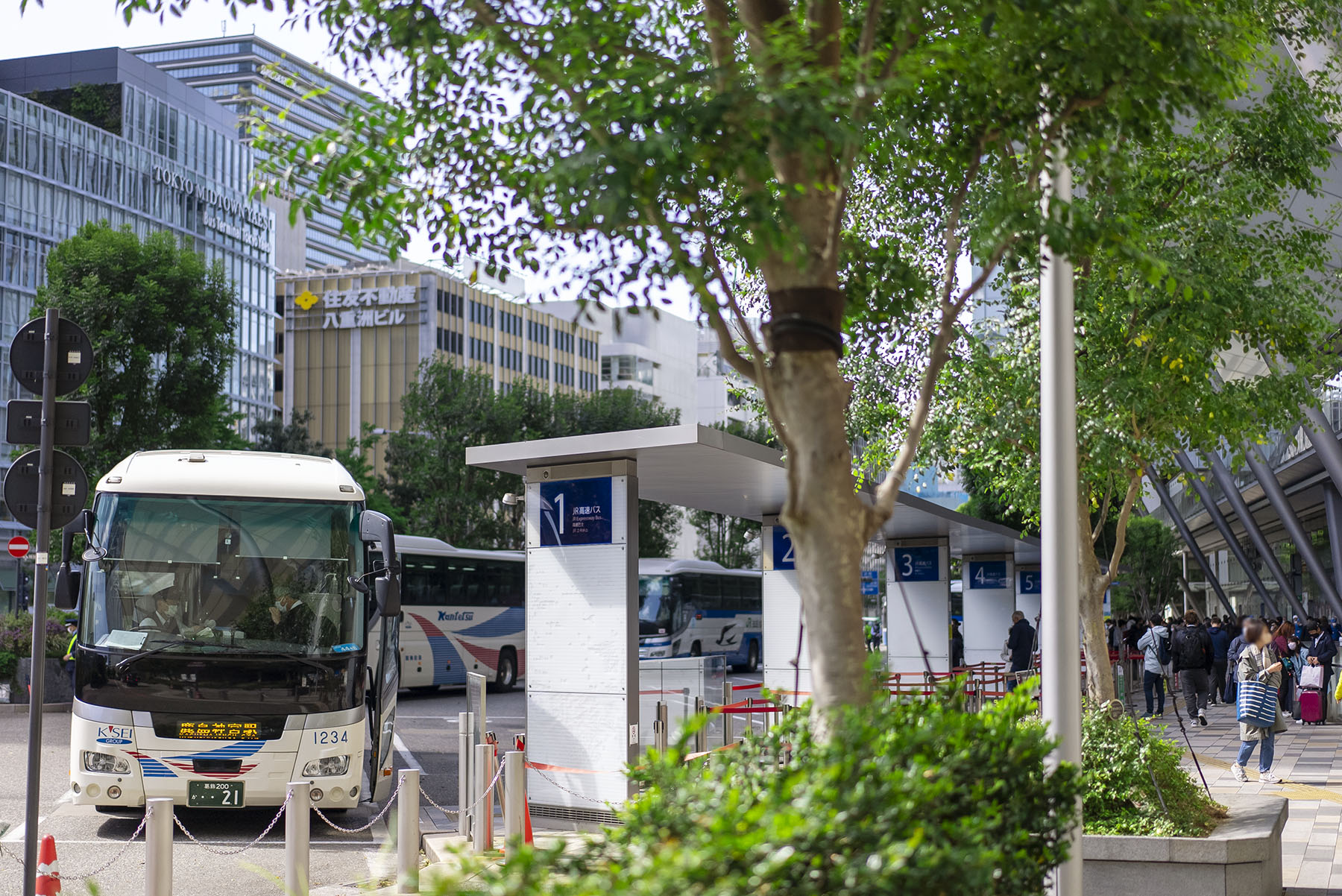
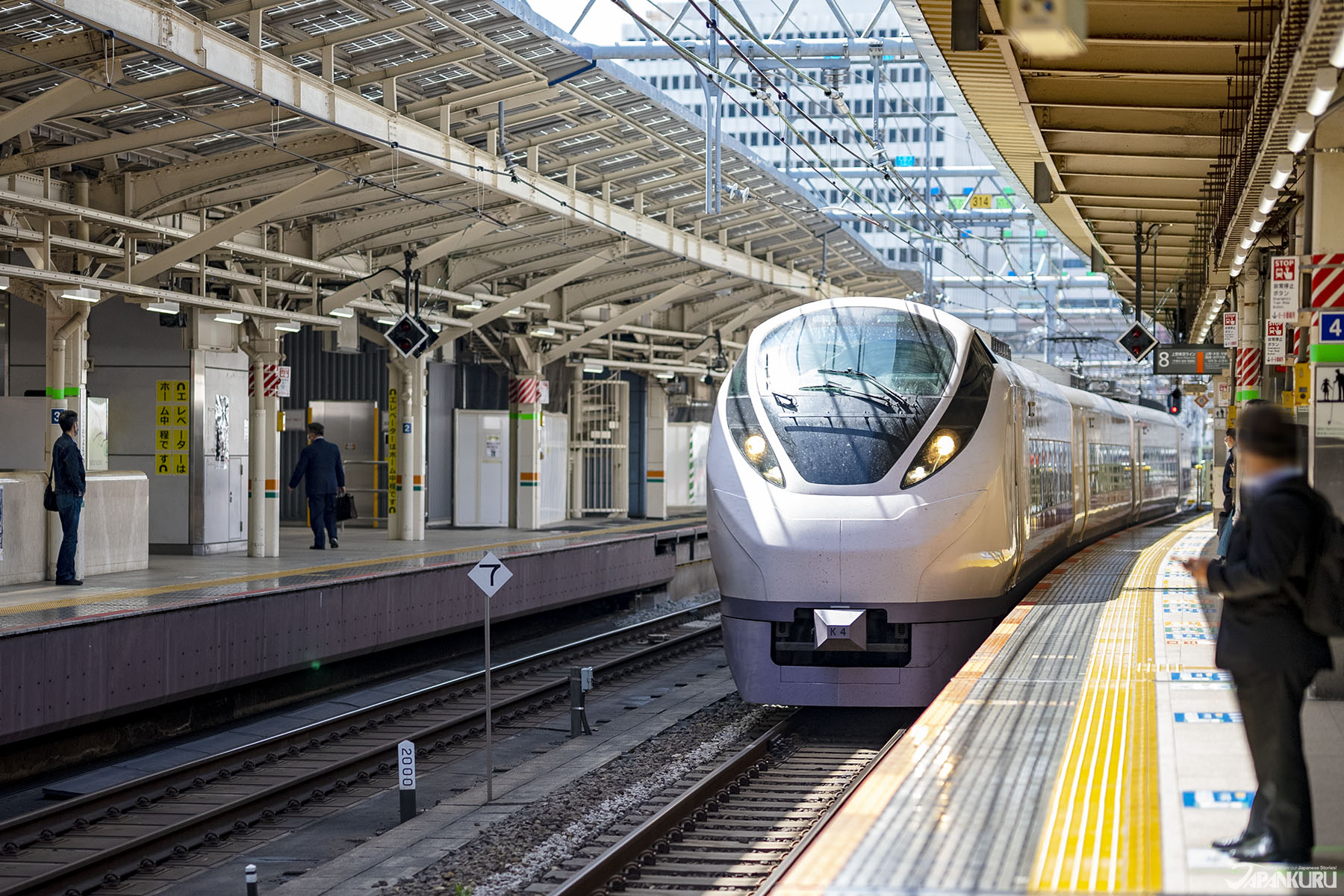
Express Bus
For the first leg of this trip, you can either take the train or a bus. For the express bus, head to Tokyo Station and find the bus area at the Yaesu South Exit. Get a ticket at the JR Bus counter or the ticket machines for the express bus bound for Mito, approximately 2,250 yen. It takes about two hours to get there, so it’s not the quickest option, but it is relatively cheap and simple.
Train
For a speedy trip to Mito, you can take a Hitachi or Tokiwa limited express train to Mito Station instead. These trains will take you straight to Mito without any transfers in only about an hour and 20 minutes, but the ticket plus the limited express pass together cost about 3,890 yen. If you don’t want to waste any extra time, it could be worth the price!
② Mito Station → Oarai Station
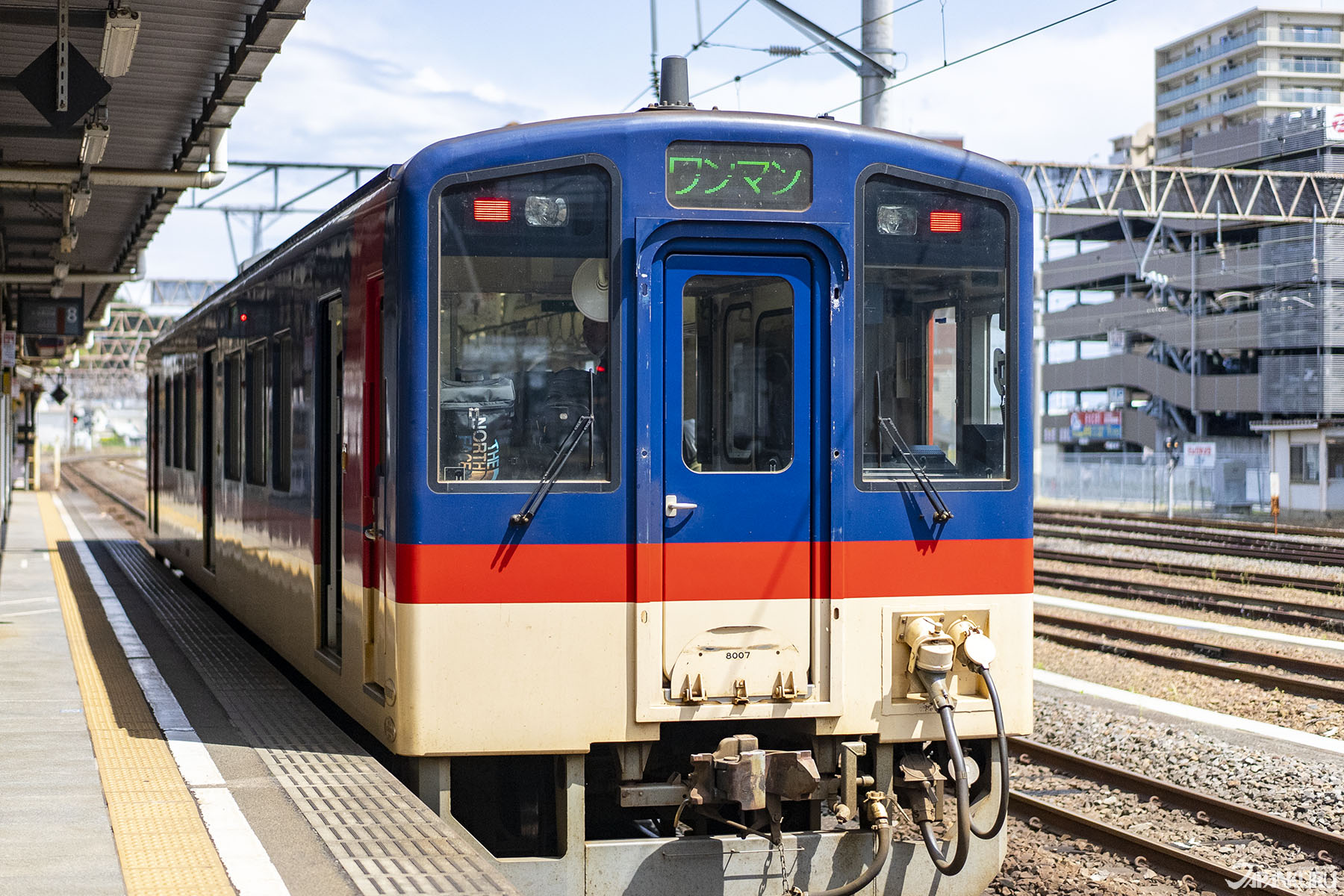
From Mito Station to Oarai we recommend taking the Kashima Rinkai Railway Oarai Kashima Line. The trip is less than 15 minutes to Oarai Station, and it only costs about 330 yen. This local train is also extremely quaint and retro, and the rural Ibaraki rice paddies seen out the window offer a totally different view from urban Tokyo. Scenic train rides like this are one of the reasons why we love traveling in Japan.
③ Oarai Station → Oarai Port Ferry Terminal
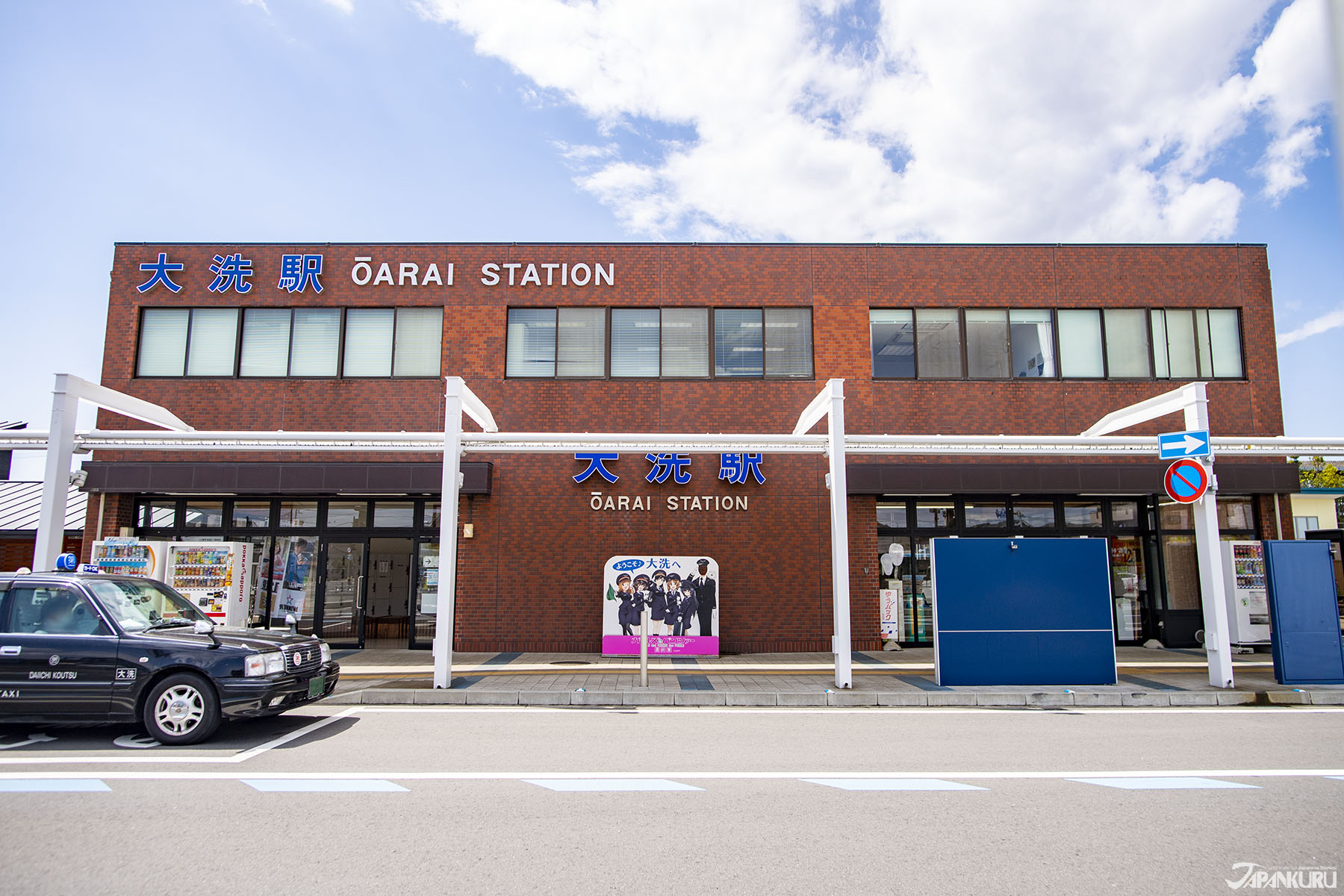
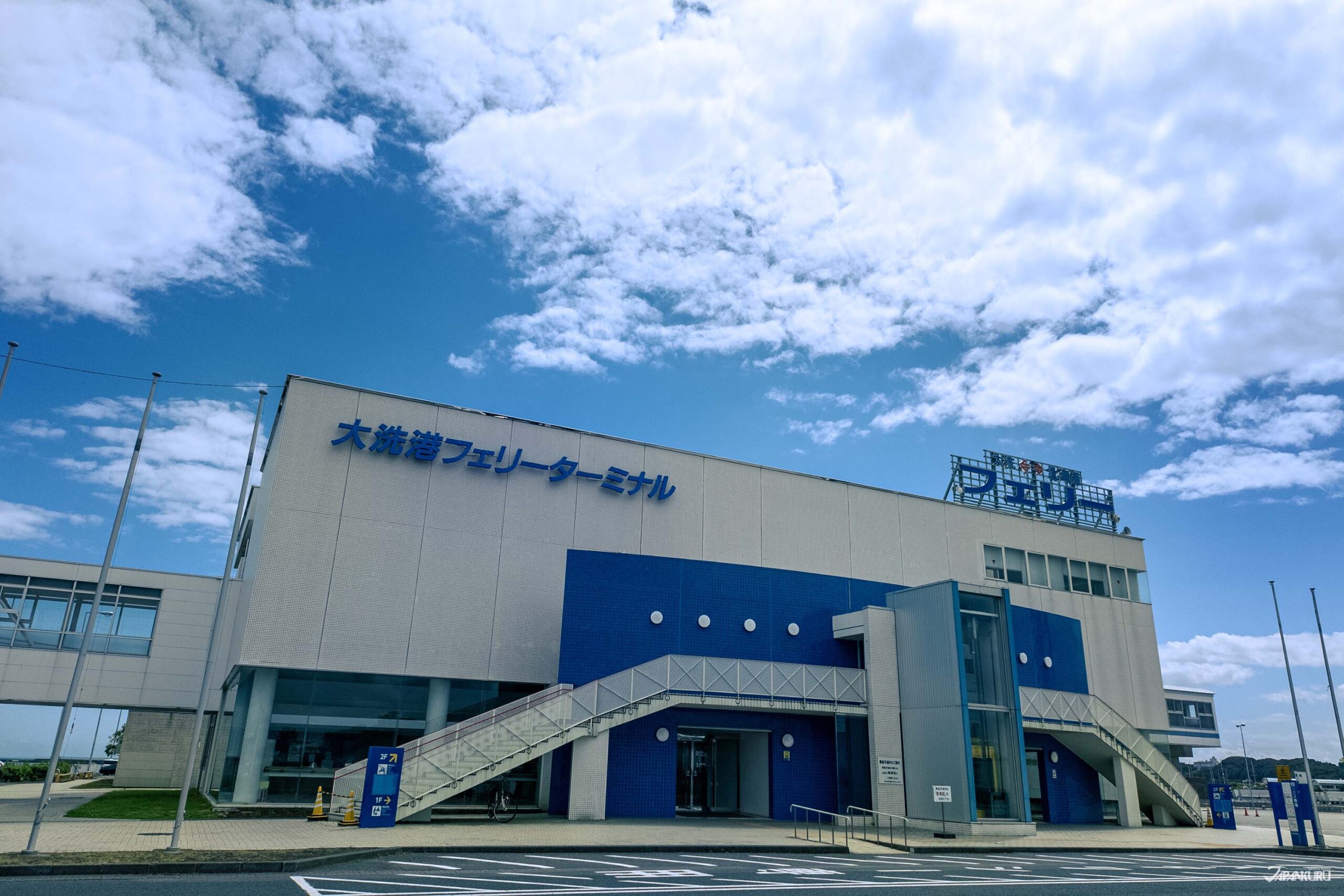
It takes about 20 minutes to walk from Oarai Station to the Oarai Port Ferry Terminal, and if you’re not in a rush, this is the simplest way to get there. Oarai also has some fun sightseeing options that are worth checking out! If you’re a little tight on time, or you just have too much luggage to deal with, a taxi from the station is only about 600~800 yen, so it’s not a big deal. Once you get to the terminal, you just check in at the counter and head to the boarding area. Before you know it, you’ll be out on the water, on your way to Hokkaido!
Aboard the Sunflower: Rooms and Facilities in a “Moving Hotel”
Cabins for Everyone, From Solo Travelers to Group Trips

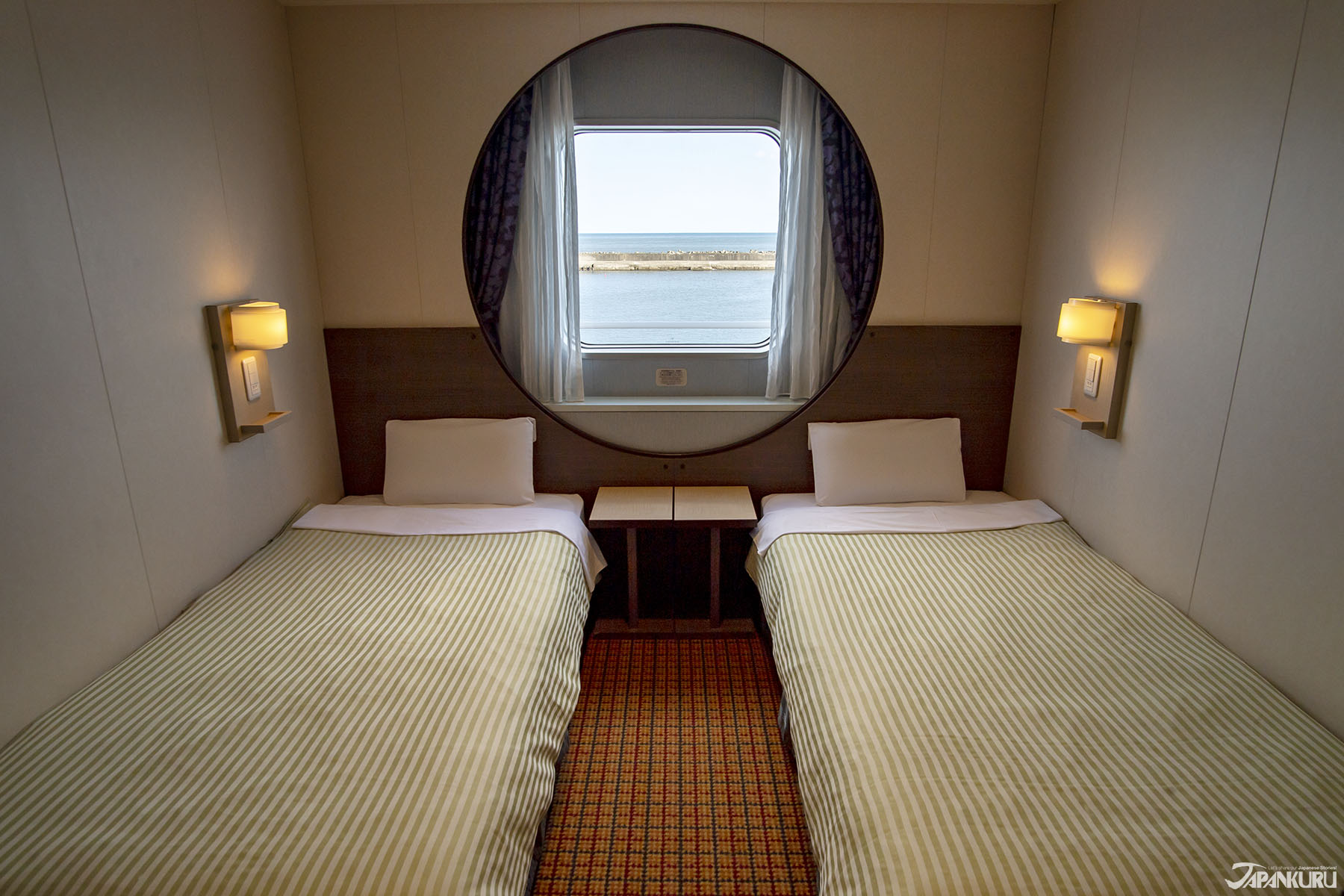
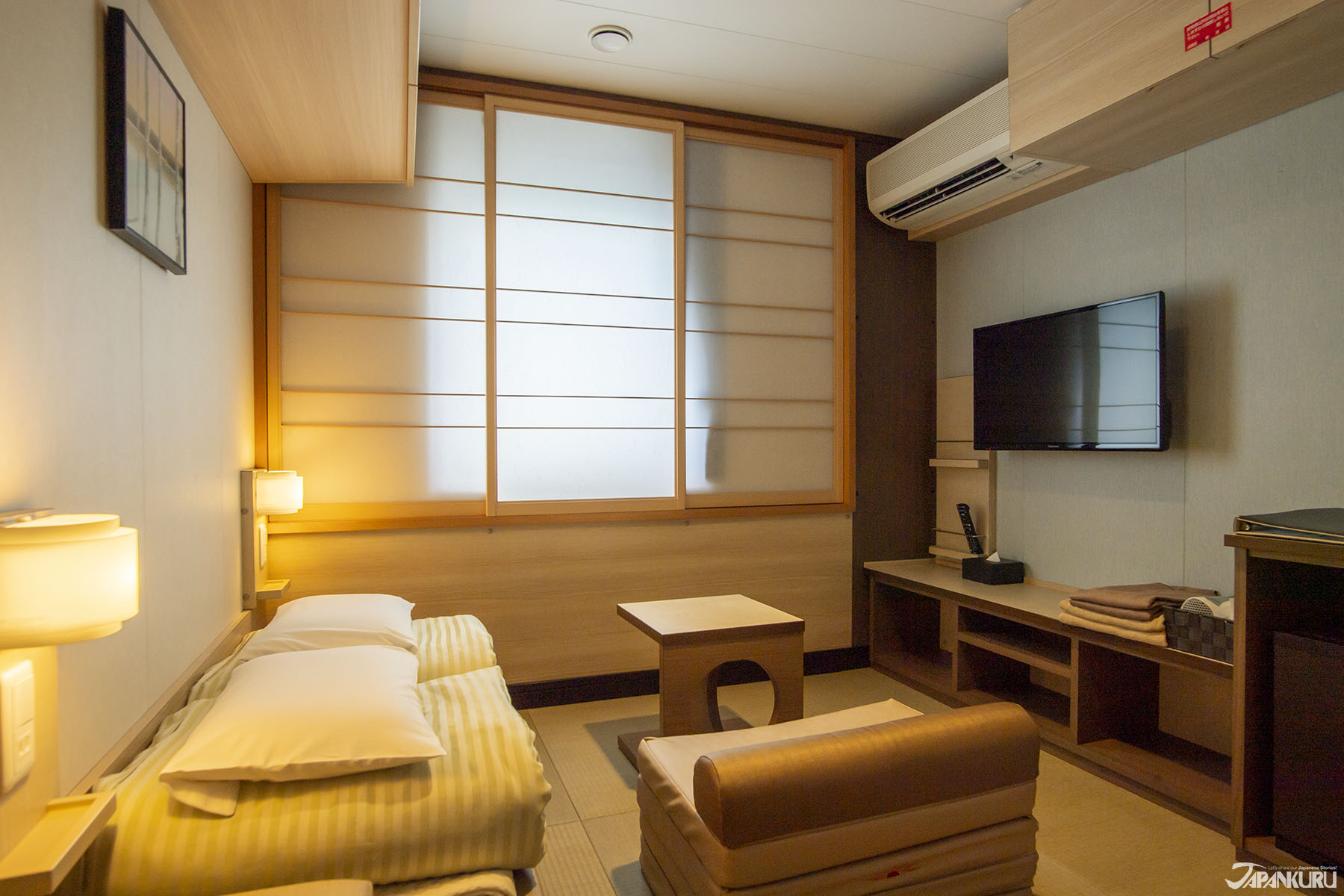
Top: Premium (Western-style room) / Bottom: Superior ocean view (Japanese-Western room), Superior ocean view (Japanese-style room)
The Sunflower might be an ocean-going ferry, but once you get on board, it feels like a big moving hotel. Since most trips go overnight, there are a variety of guest rooms for all kinds of travelers and different group sizes. There are Premium Rooms with balconies, for 2~4 people, and big spacious Ocean View Rooms with broad windows – including some Japanese-style rooms with tatami mat floors! The ferry even accommodates pets with pet-friendly cabins, so if you’re planning a trip with your furry friend, they can come along too!
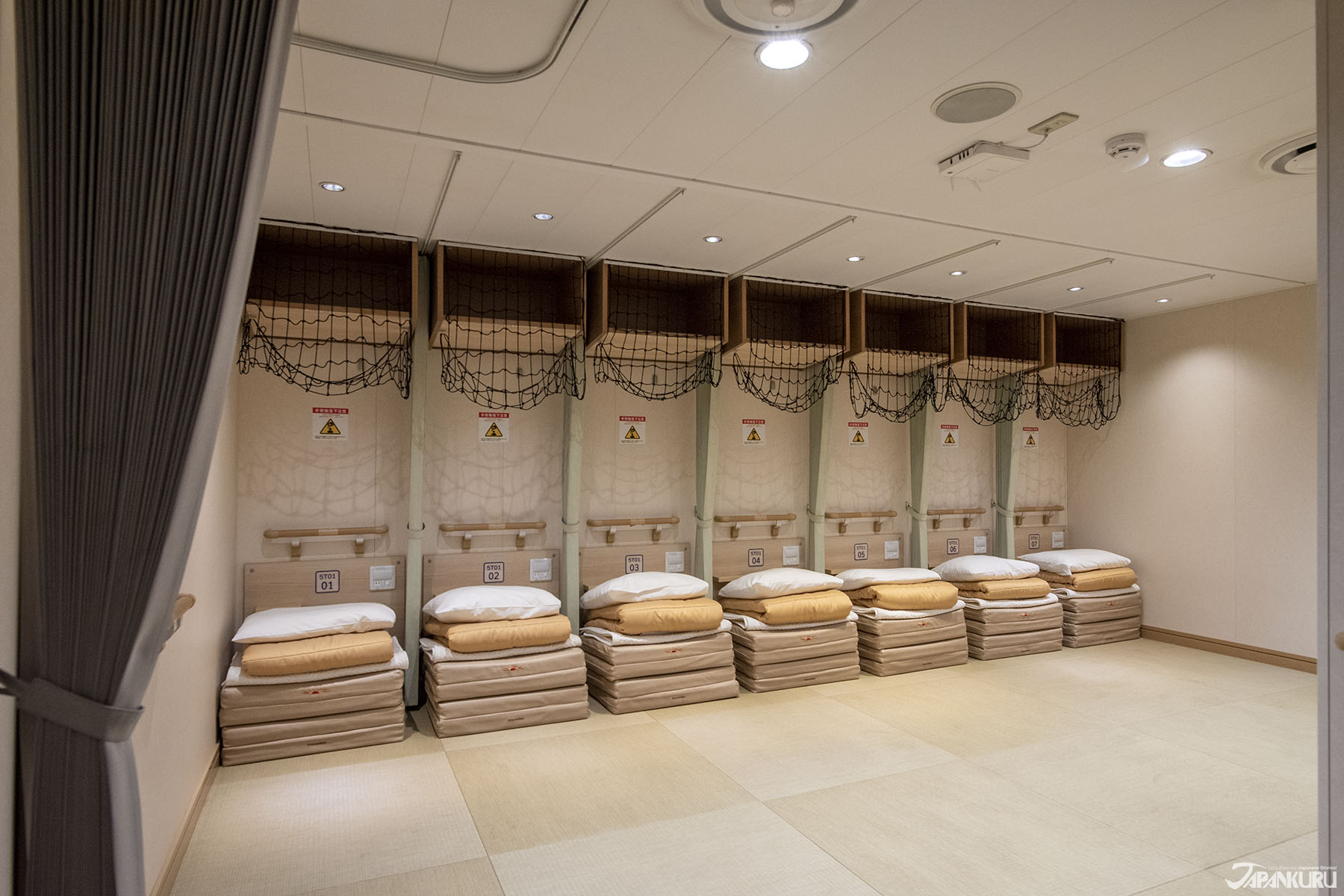

Left: Tourist / Right: Comfort
For those traveling in larger groups, you might want to try out the classic Japanese ferry tour experience by booking berths in one of the Sunflower’s larger shared cabins like the Tourist Rooms, which sleep up to 25 people! The Comfort Rooms are also shared, but they provide a little more privacy with bunks similar to a Japanese capsule hotel. Whatever kind of room you’re looking for, the Sunflower probably has something to meet your needs.
▶︎ Sunflower Cabin Details (en): Evening Ferry | Night Ferry
Gourmet Meals Aboard a Ferry
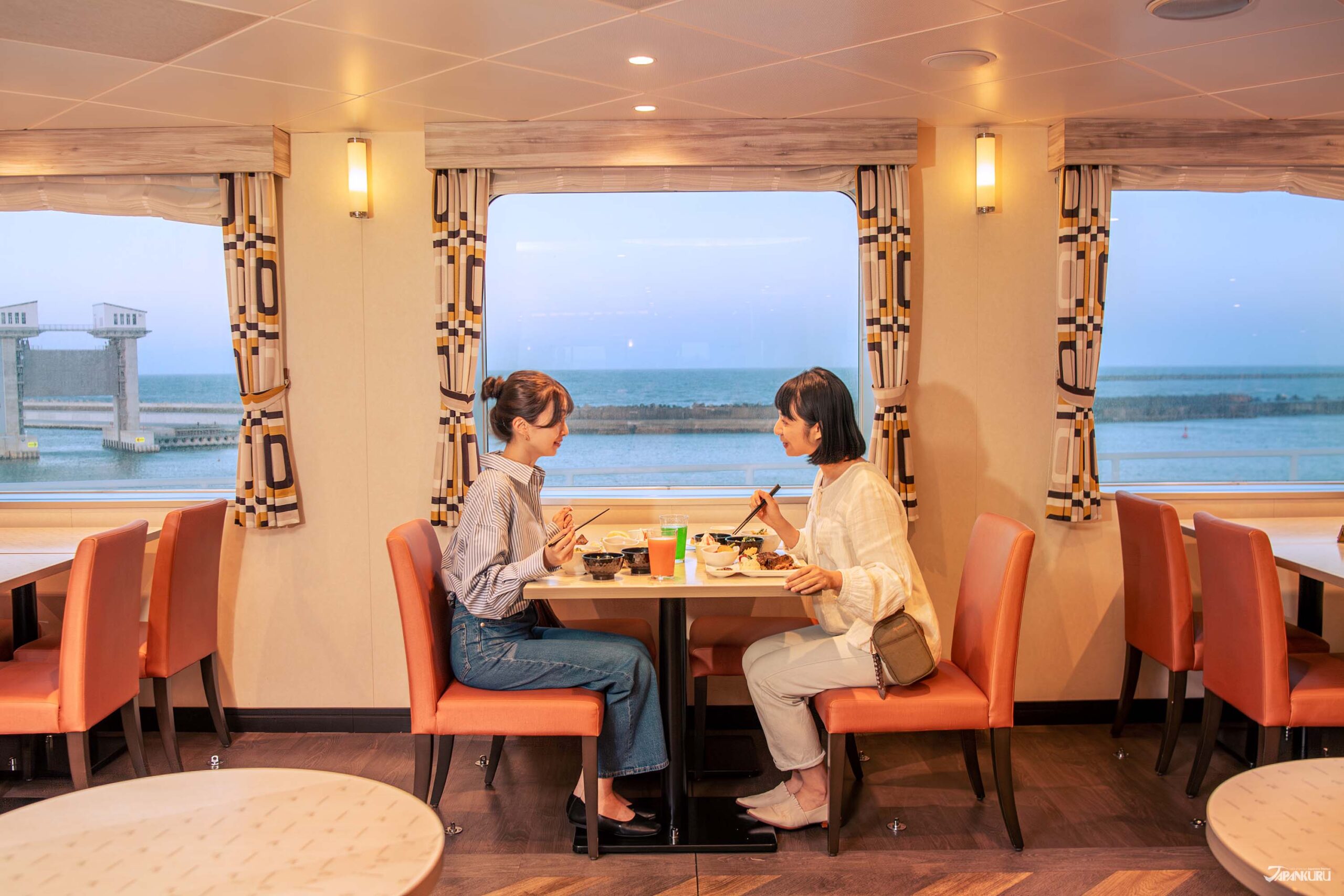
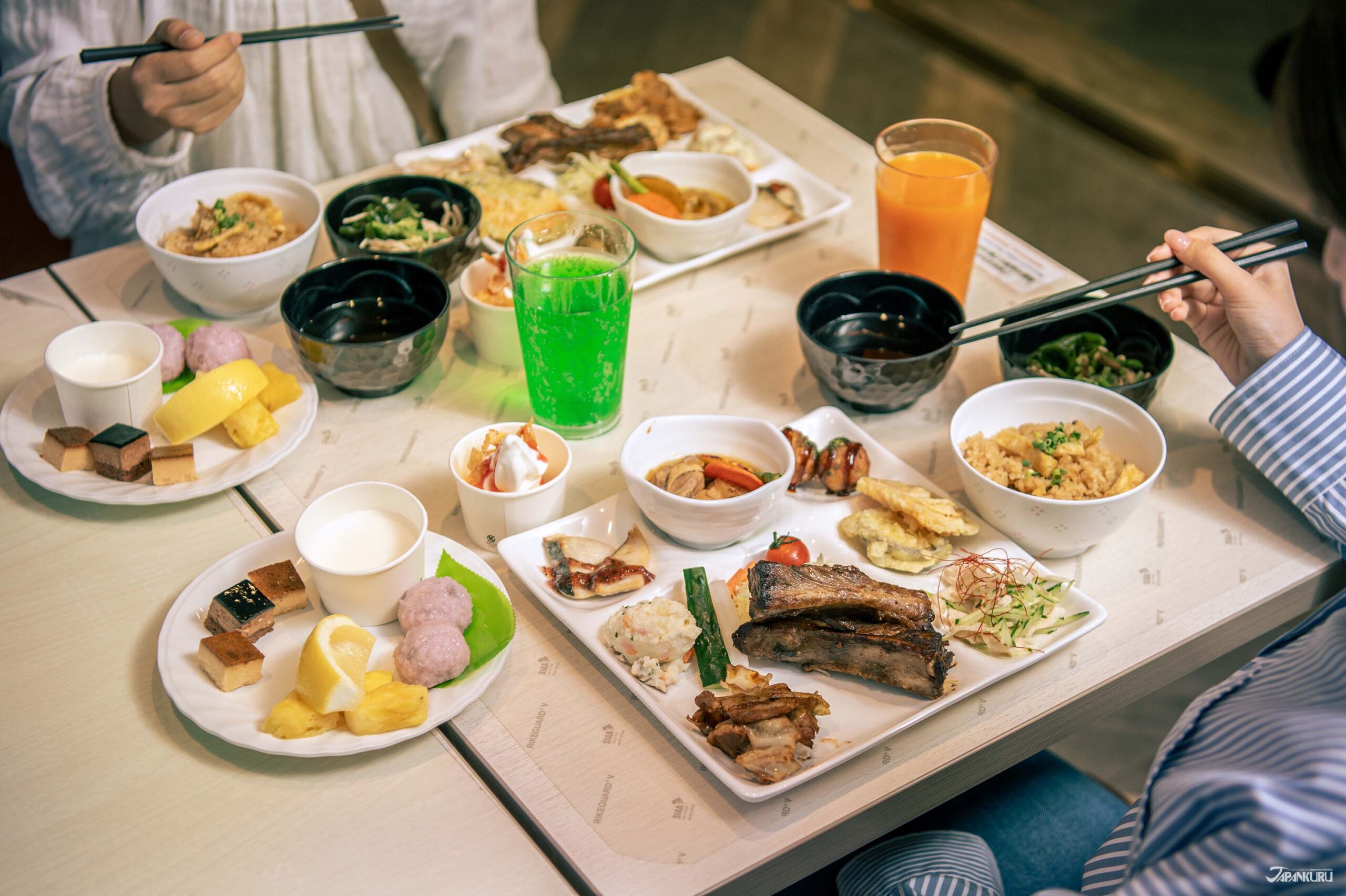
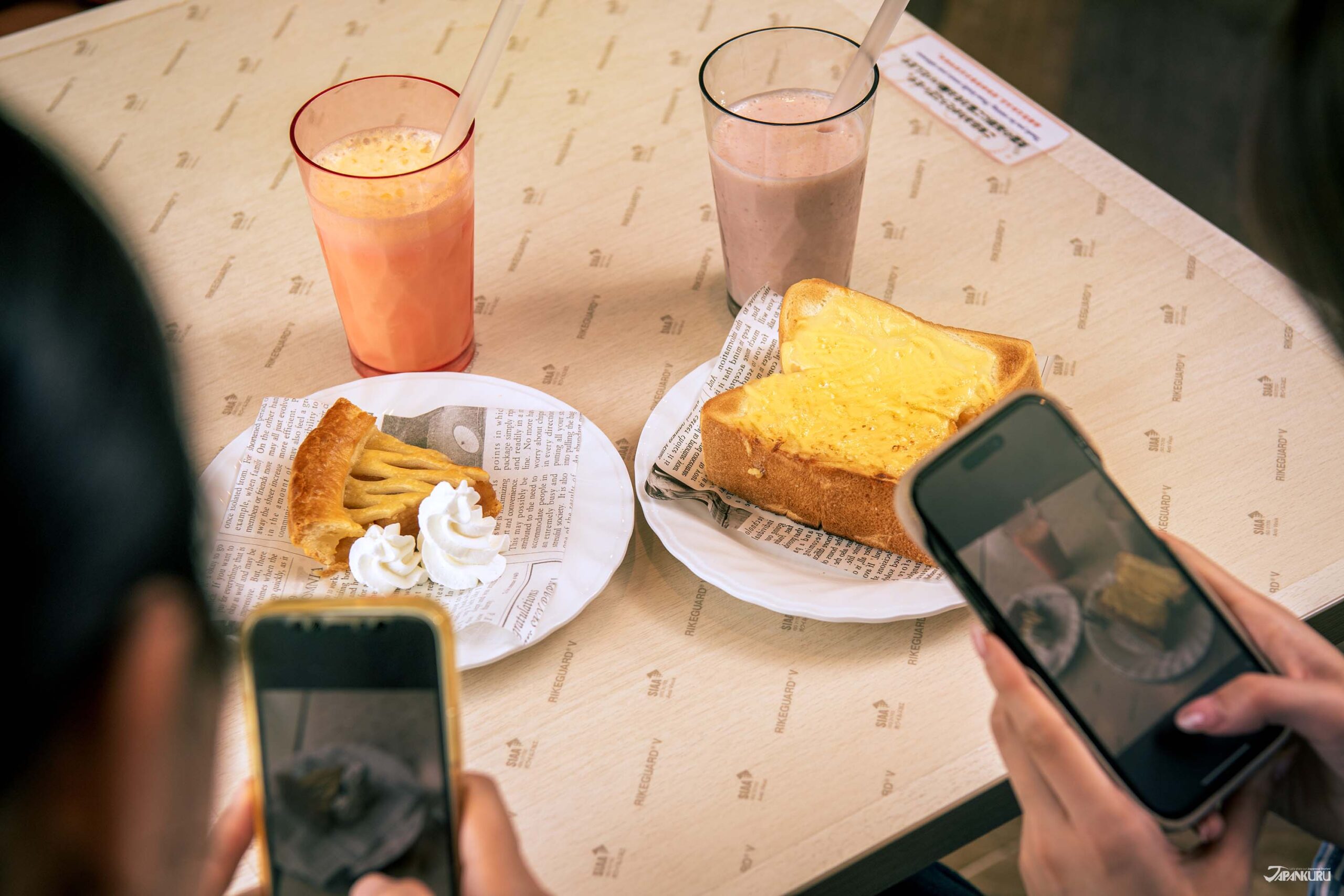
On evening ferry trips (departing around dinner time), passengers can enjoy some surprisingly substantial (and impressively tasty) meals on board at the ferry restaurant. There are a number of dinner options*, but our favorite is the dinner buffet, which comes with a wide variety of mains, sides, salads, drinks, and desserts. Many of the dishes are prepared using local seasonal ingredients from Ibaraki and from Hokkaido! In the morning, you can also grab breakfast at the restaurant. Since the ship arrives in Hokkaido around lunchtime, you can even stop into the restaurant from 11:30 to 12:30 for a light lunch or some snacks.
The whole side of the restaurant is lined with big glass windows looking out across the water, so we recommend grabbing one of the window-side tables for a spectacular view while you eat!
▶︎ Sunflower Restaurant Details (en)
*Set meals are limited in quantity and may not be available at certain times of year.
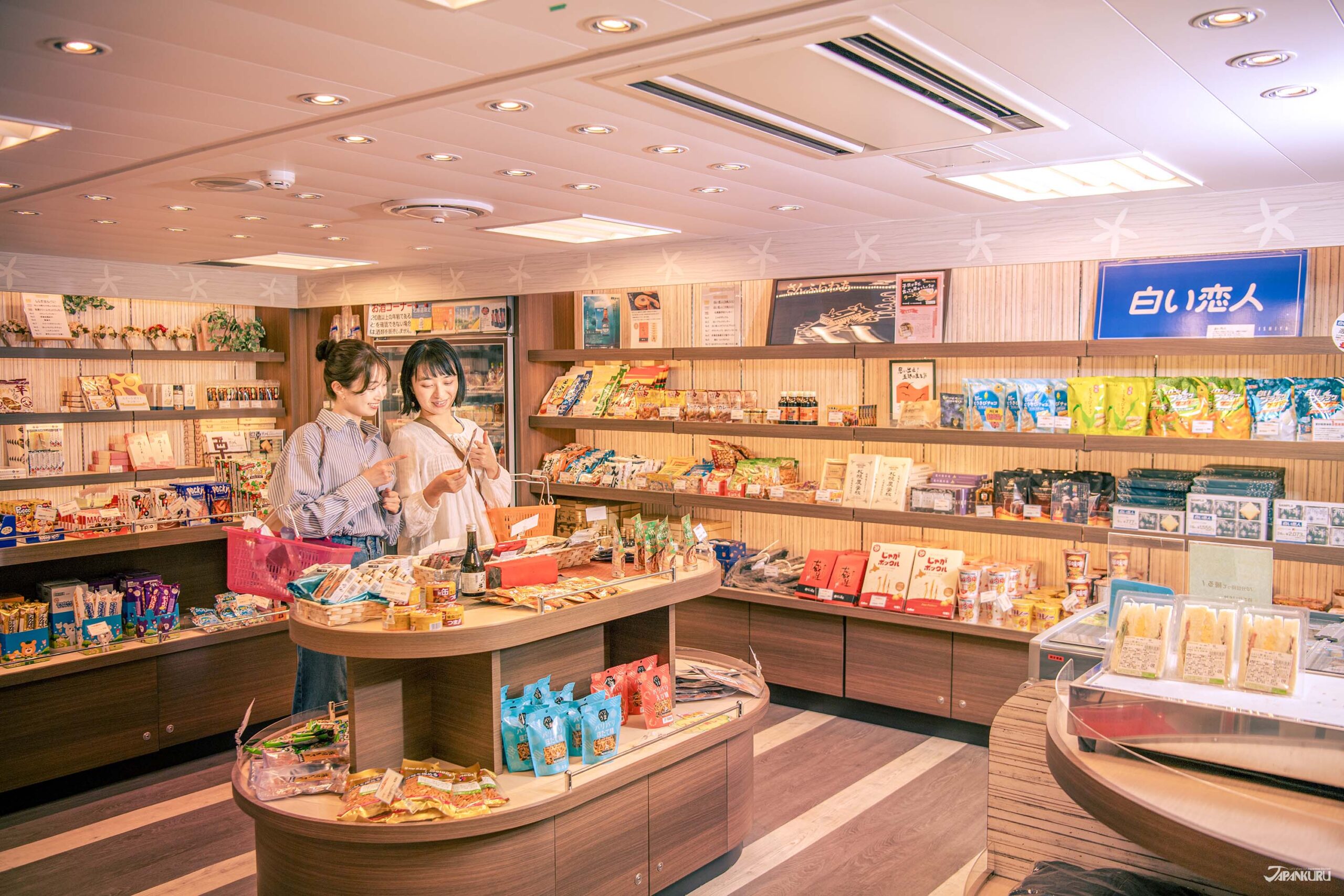
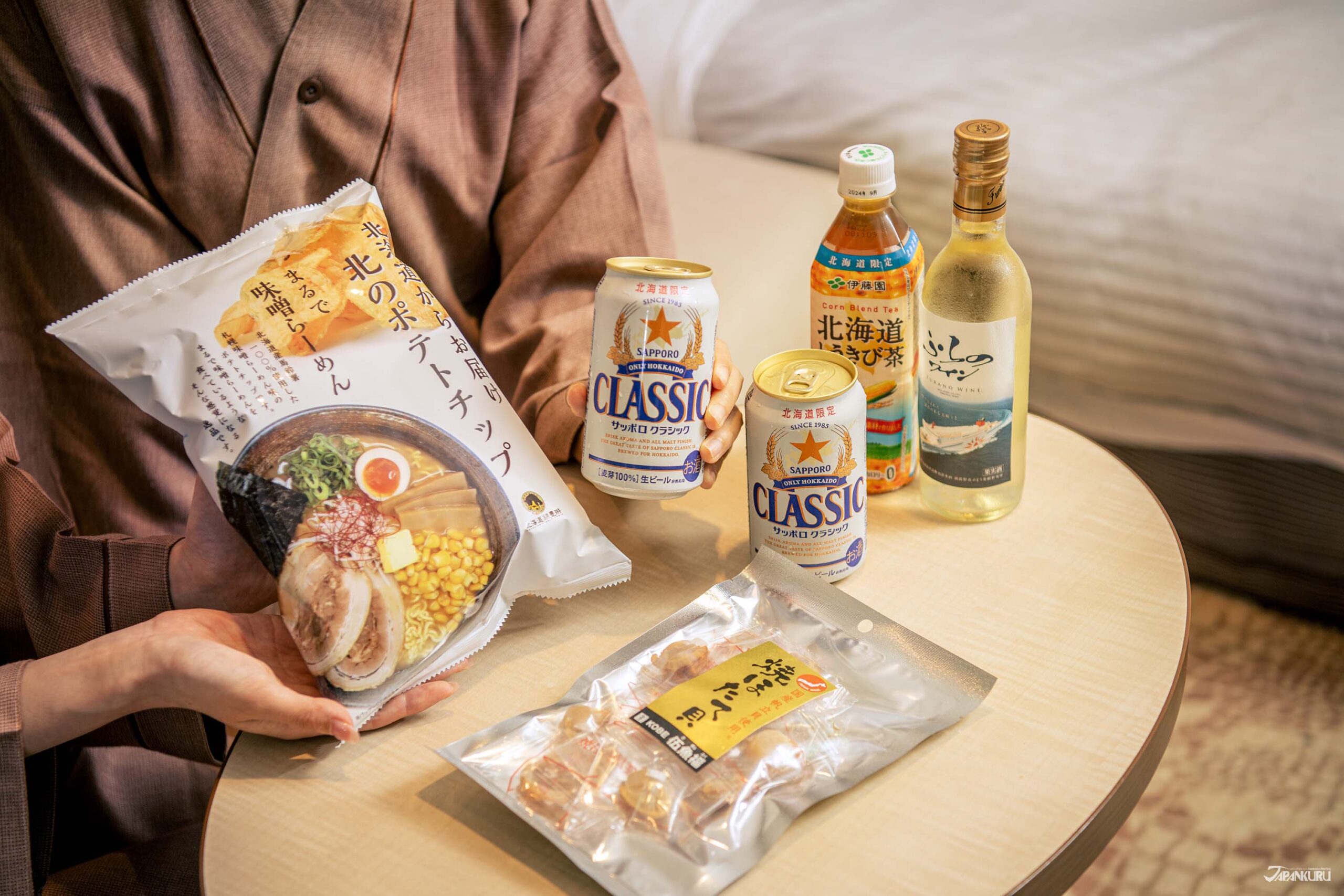
There’s always room for dessert – or some extra Hokkaido snacks – so don’t miss the Sunflower’s shop! The shelves are well-stocked with sweet treats and gourmet ice cream, standard Japanese snacks and local delicacies from Hokkaido and Ibaraki, soft drinks and unique alcoholic drinks (try the sake, or a Hokkaido beer), plus everyday essentials of the non-food variety in case you forgot to bring anything on board. Pick up some Hokkaido and Ibaraki souvenirs, or grab some fun treats for a midnight snack in your cabin – enjoy them as the ferry whisks you away north to Hokkaido.
Ferry Facilities for a Fun Trip Along the Coast
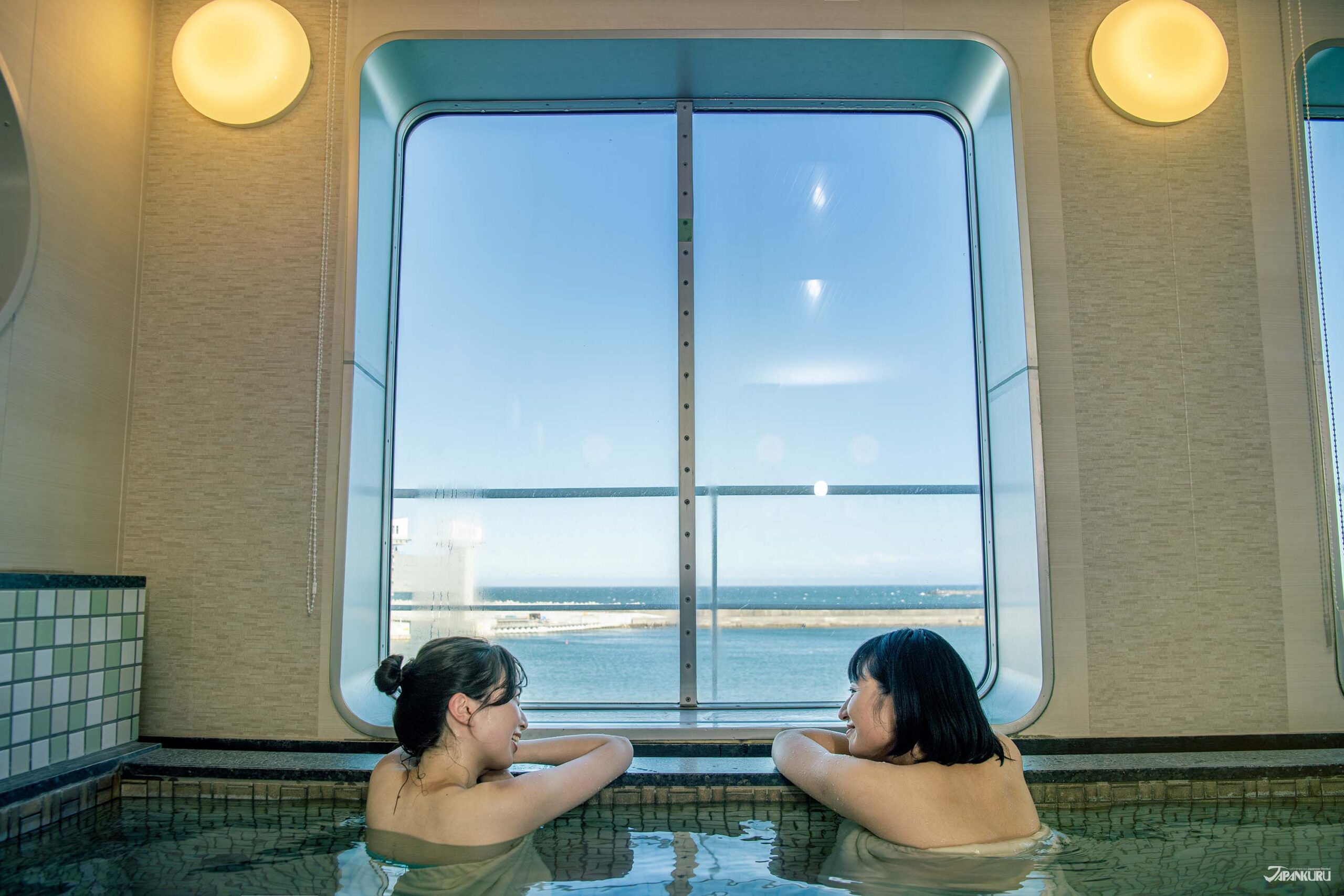
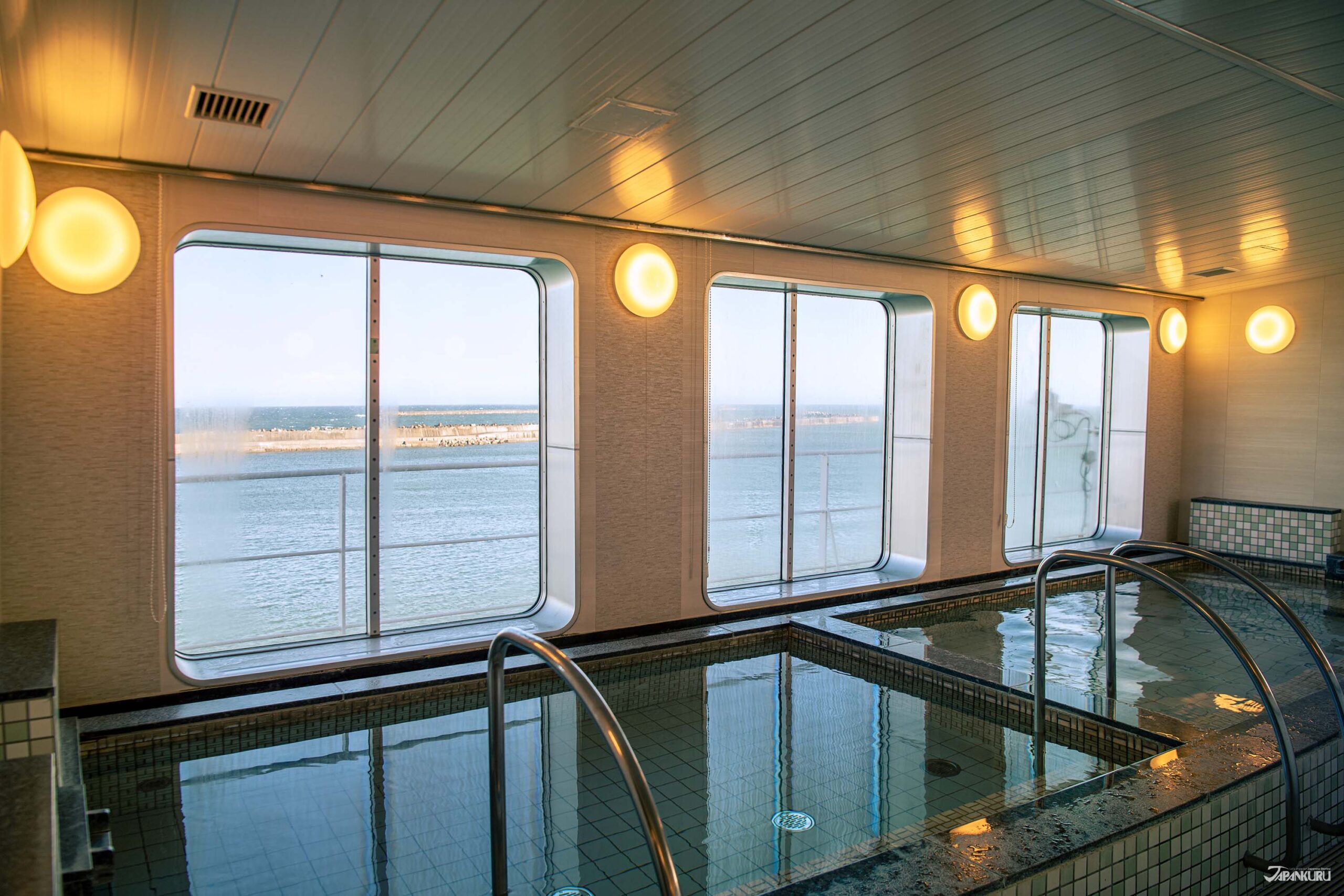
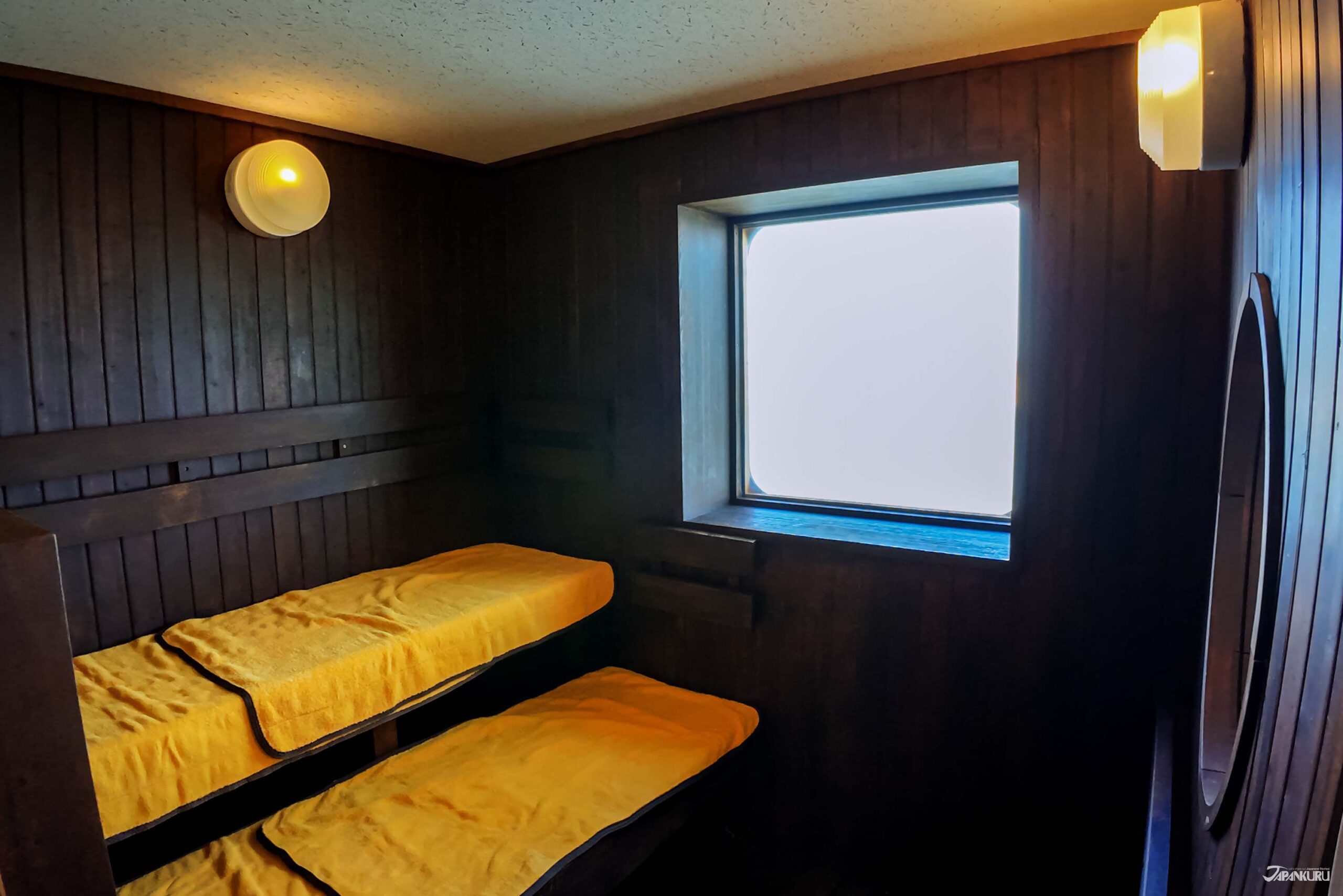
For most the hours you spend aboard the Sunflower on this overnight trip, you’ll probably just let the ship rock you gently to sleep, but you’ll probably enjoy the waking hours until you arrive in Hokkaido as well. Relax in your comfortable guest room, try some Japanese delicacies at the restaurant, and explore the ferry’s unique facilities! One of the most unique attractions on this big boat, and perhaps the most surprising for many foreign passengers, is the the larged shared bath and sauna. The bath is totally free to use for all ferry passengers, and the big windows look out onto the blue waters of the ocean outside. Since bathhouses are very popular in Japan, there are many places where you can look out at a nice view while you soak in hot water, but very few baths where that view changes as you move along the coastline!
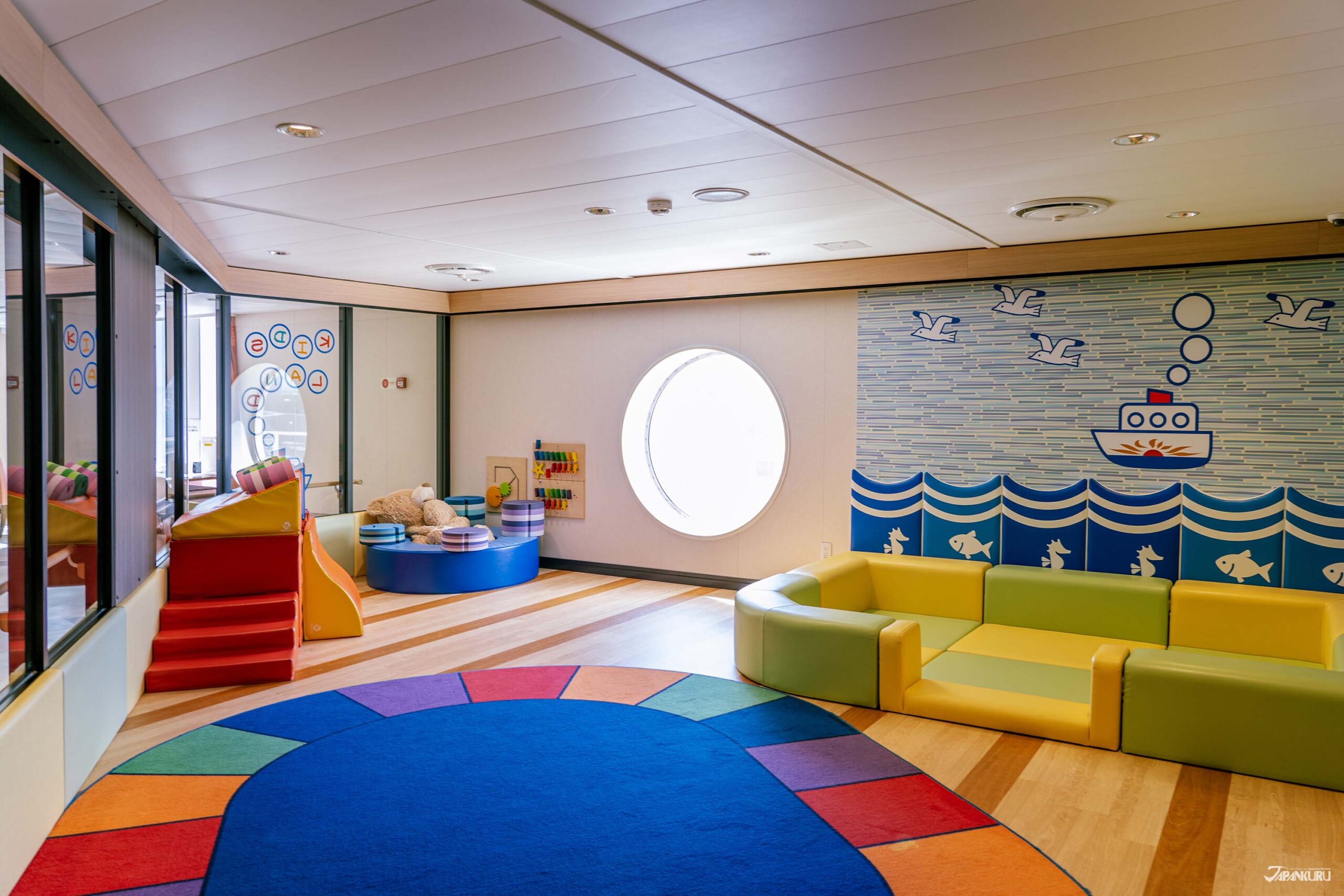


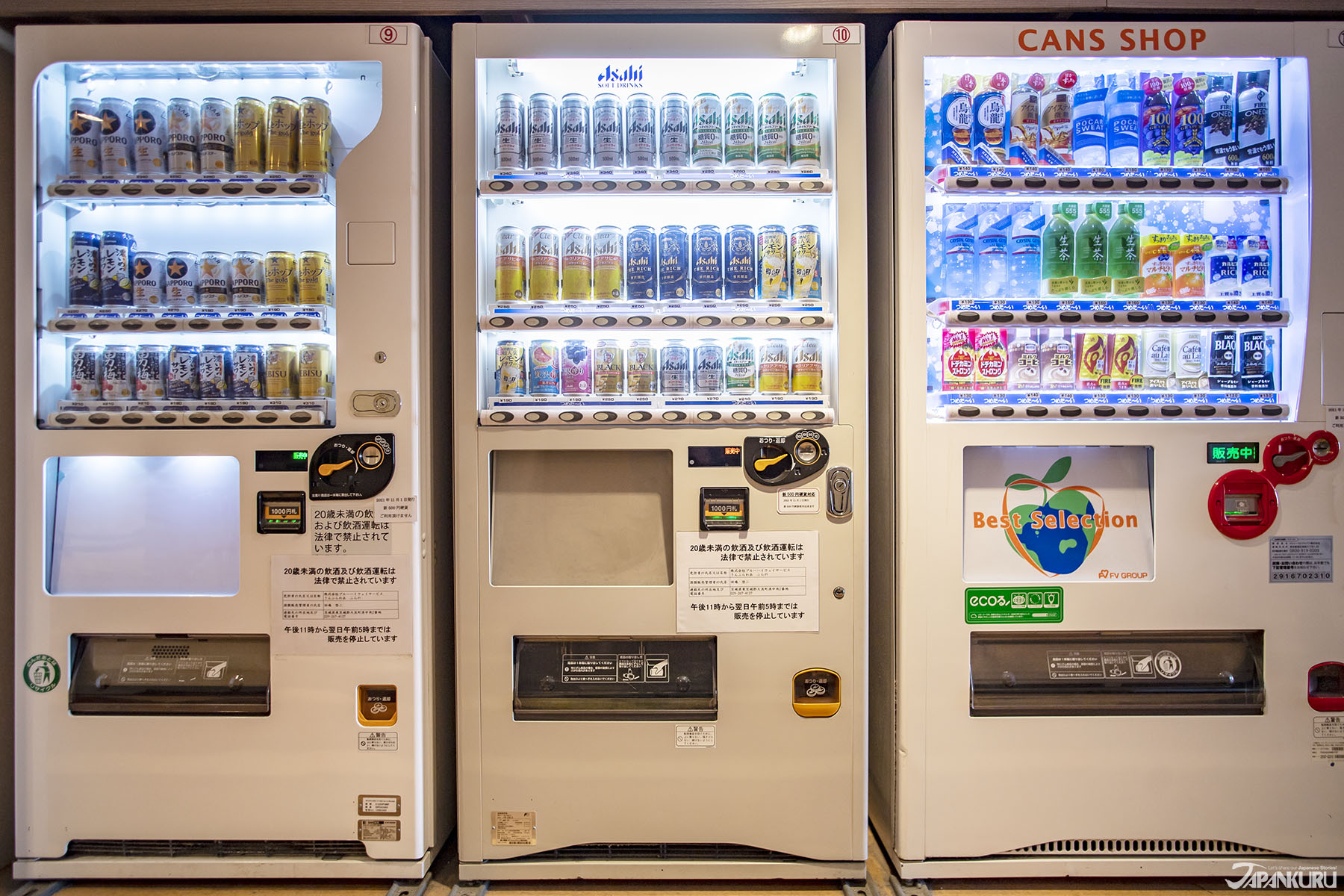
Small children can also pass the time in the colorful Kids Land, and claw machine lovers of all ages can enjoy a few minutes in the game corner. (Adults might also enjoy the novelty of a round of pachinko while on the ocean!) For anyone starting the feel the fatigue of a long trip to Japan, this leisurely ferry trip to Hokkaido is already a great way to relax, but the massage chairs offer another level of relaxation. And even during the hours when the Sunflower’s restaurant and shop are closed, you can still get drinks and snacks from the vending machines. It’s all a little like a spa day at sea.
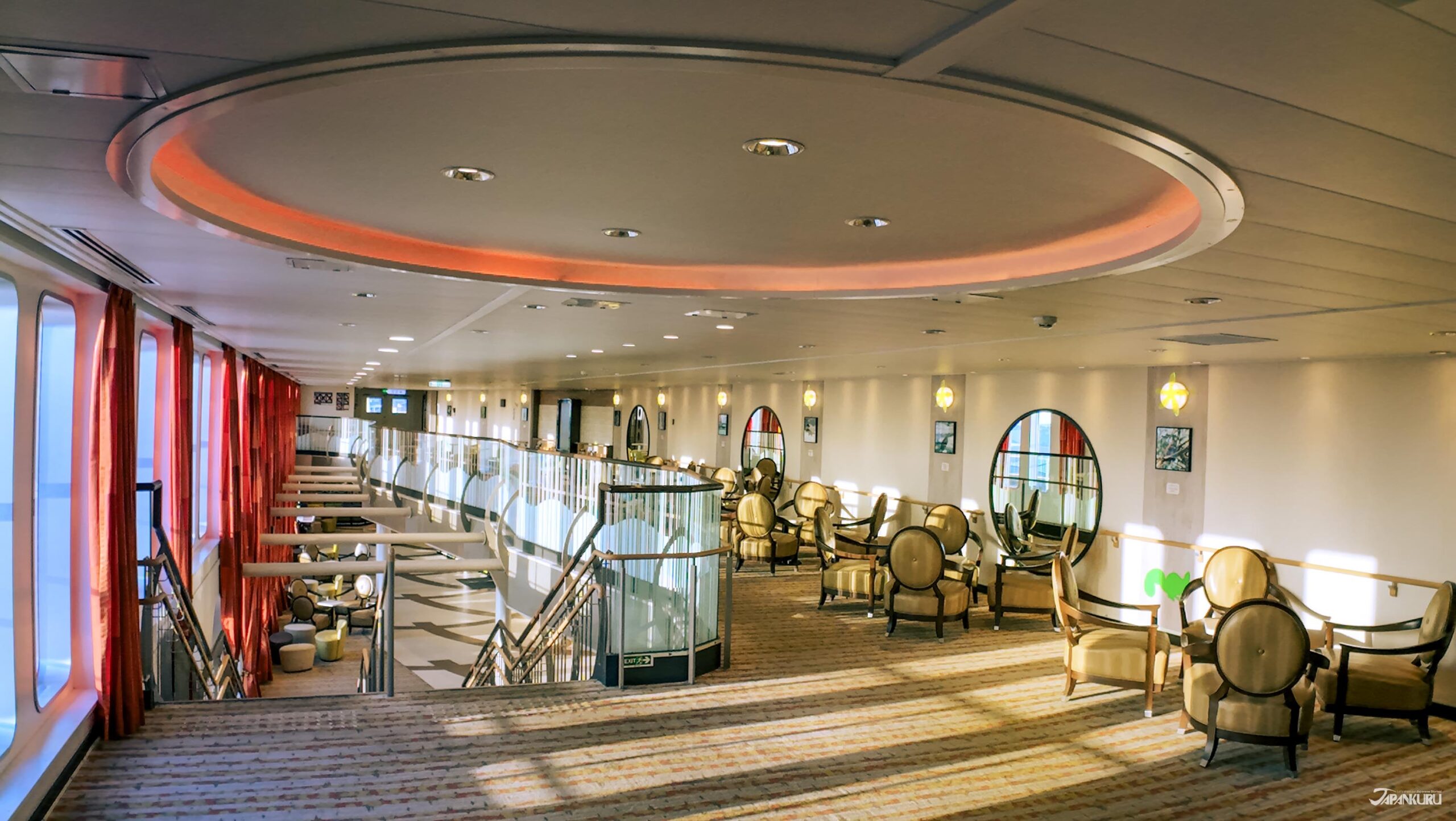
The ferry lounge (the “Promenade”) in particular takes advantage of the ship’s relatively large size, offering passengers a seating area complete with a multi-level atrium, perfect for whenever you just want to sit back, relax, and enjoy the ride.
Unique Sunflower Experiences
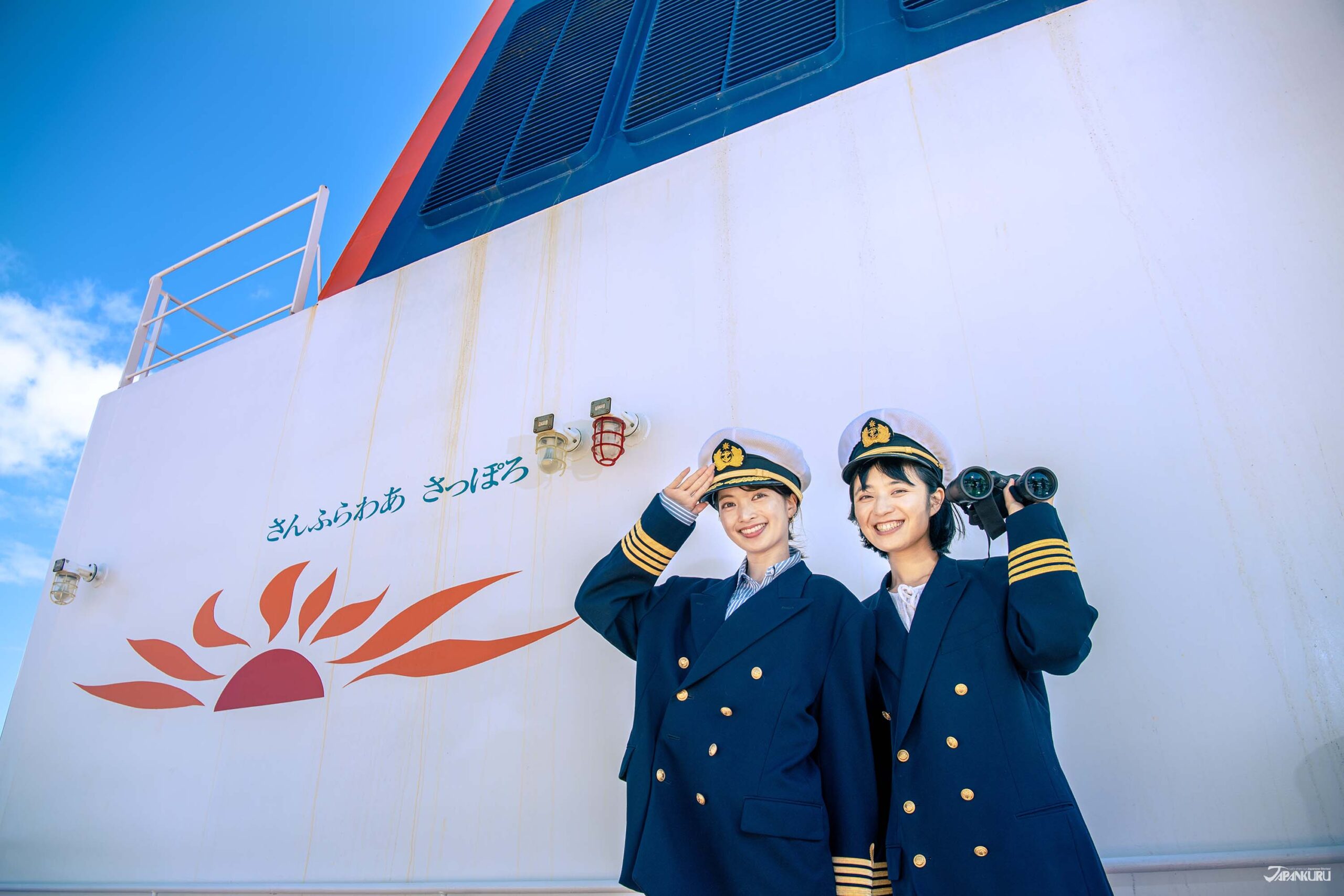
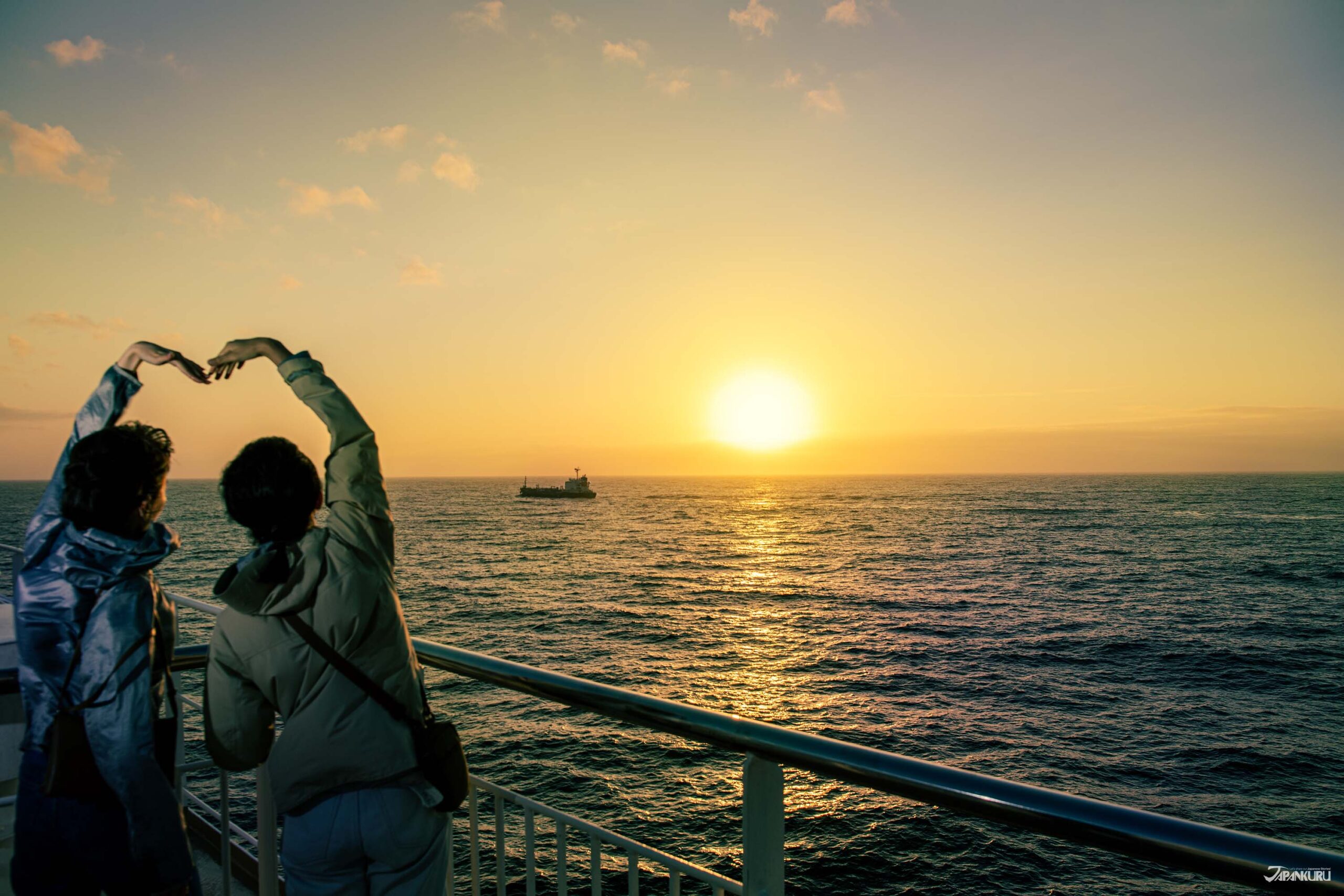
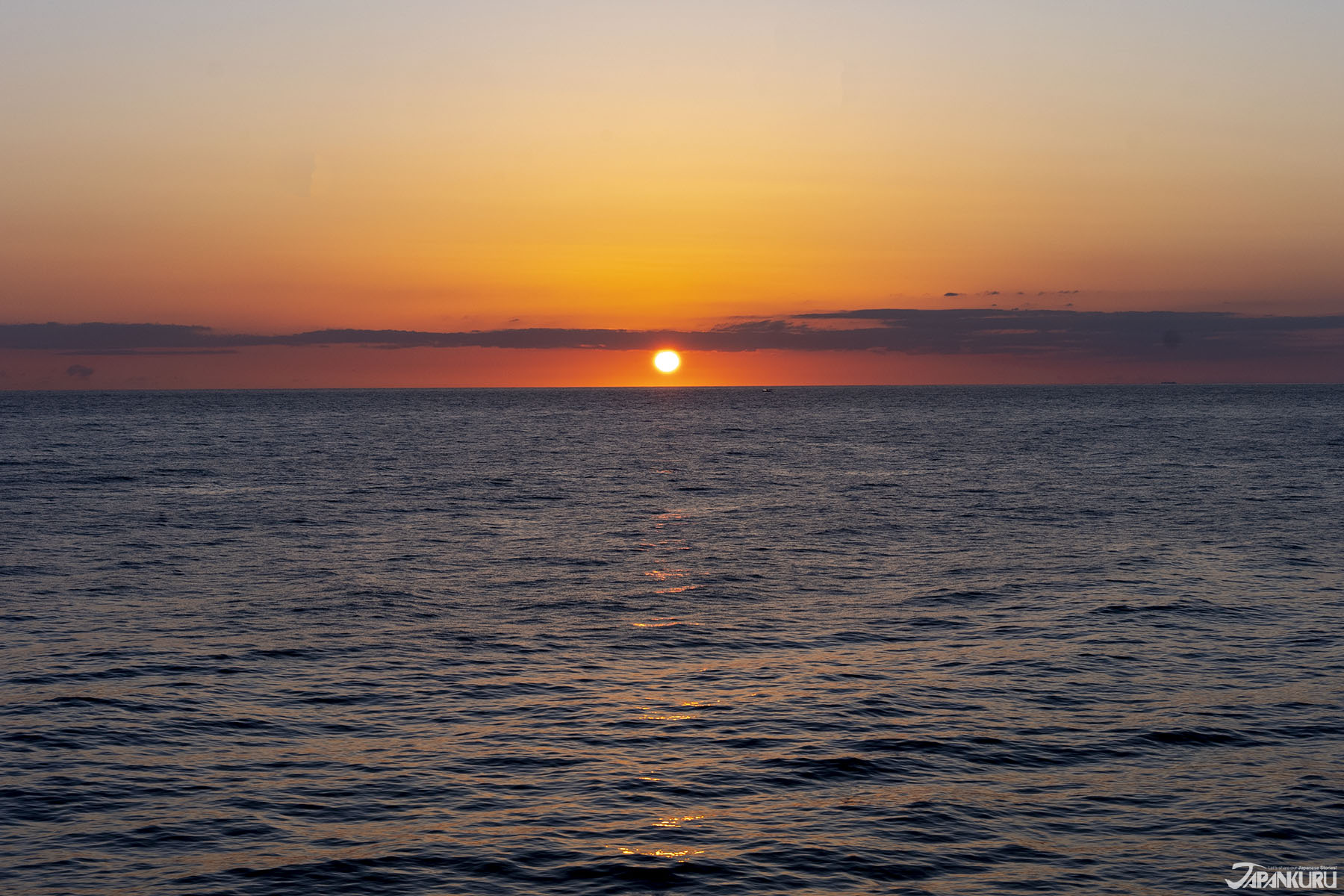
To make this ferry experience extra special, the Sunflower offers some fun services to give passengers a trip they’ll never forget. Head to the information desk to rent a captain’s uniform (complete with hat) and a pair of binoculars*, so you can live out your ship’s captain dreams! Head out on deck in your crisp uniform, and feel the mighty power of your ship’s engines beneath you, as she charges on through the blue surf.
You can also try catching the sun on the horizon – just check the times for sunset and sunrise beforehand so you don’t miss them! Sunset often happens before the ship departs, and to see the sunrise you’ll have to get up bright and early, but the spectacular view of the sun rising from the smooth waves of the Pacific Ocean is definitely worth waking up for.
*Binocular rentals require a deposit.
How to Make Reservations for the Ferry Sunflower
Take the first step towards your ferry trip to Hokkaido by heading to the Sunflower (Tokyo Area ⇔ Hokkaido) reservation page! The Sunflower’s official reservation page is available in both Japanese and English, so even overseas visitors who can’t read Japanese can easily make their own reservations.

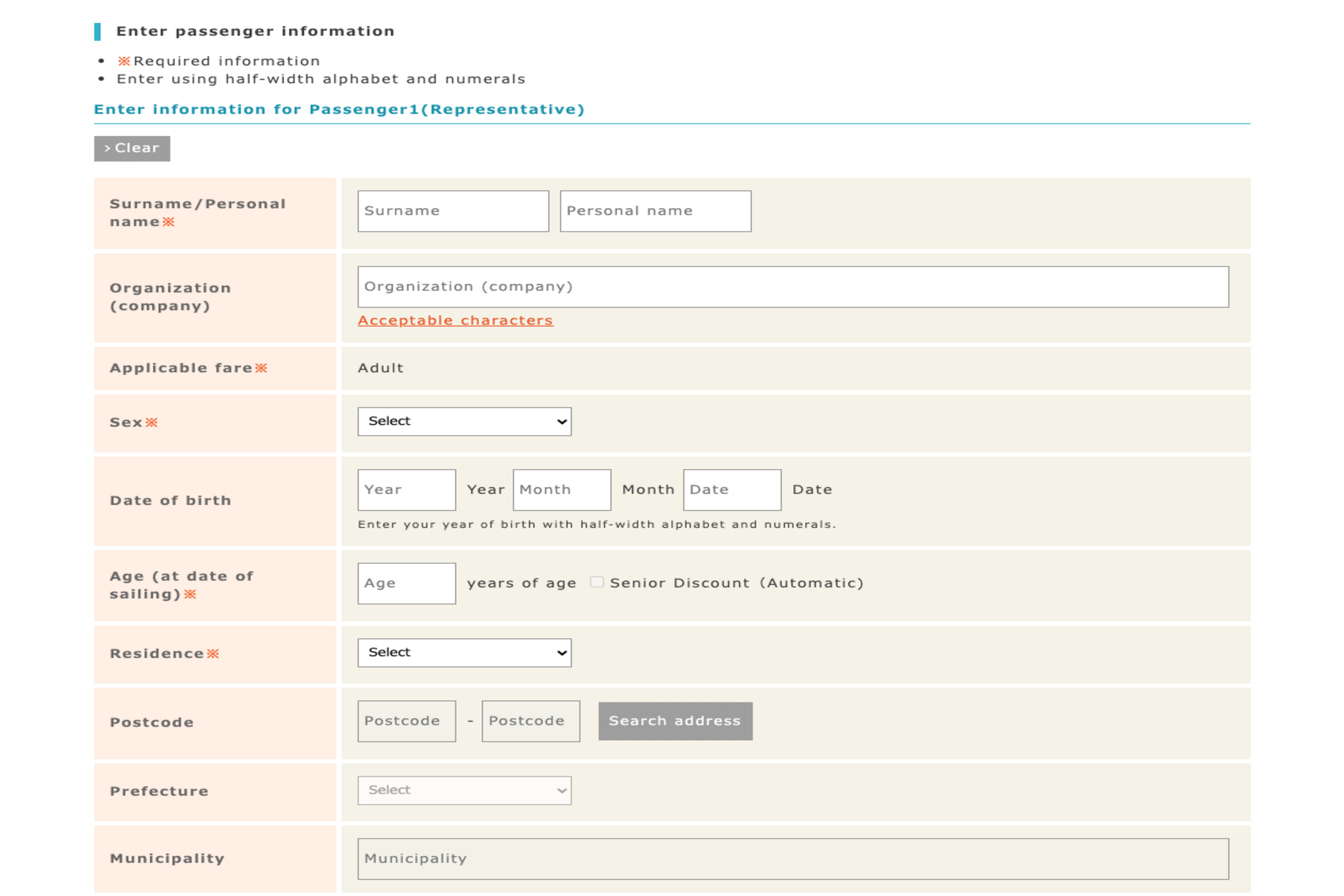
Image Source: MOL Sunflower
The reservation process itself is quick and simple. Start by clicking “Make a reservation,” choosing “Oarai→Tomakomai” if leaving from Tokyo, and then selecting the departure date and time that best fits your schedule. When you click on the ferry you want to take, you can choose one of the available rooms, and enter in your details – the number of passengers in your group, plus any pets (or cars!) you might be bringing aboard. Once you’re sure the trip details are exactly as you want them, and you’ve agreed to the Boarding Conditions, you can fill in your reservation info (name, birthday, contact info, etc), and even enter any accessibility accommodations you might need. (Make sure to enter your car information, too, if you’re planning to bring a vehicle on board.)
The reservation system will take you to an “Enter Meals” page, but you can skip right past this, because the onboard restaurant doesn’t require any reservations! On the Sunflower you can purchase your dinner from the ticket vending machines (cash-only!) in front of the restaurant, whenever you’re ready to eat. Fill out all the necessary information, complete the payment process, and your Sunflower reservations are complete! You’re ready to head to Hokkaido!
Hello Hokkaido! Start Your Trip With Our Hokkaido Recommendations
We believe the perfect trip to Hokkaido is a two-part experience. First, you start with a dreamy ferry cruise along the coast of Japan, with all the comfort and convenience of a hotel, and the shipboard fun of a cruise on the Pacific Ocean. Next, you explore the huge island of Hokkaido, concentrating on all the magical landscapes and mouth-watering food found in cities like Furano and Biei. So we’ve put together a few suggestions to help you plan the perfect itinerary after you get off the Sunflower ferry in Tomakomai, Hokkaido.
Admire the Spectacle of Hokkaido’s Natural Wonders
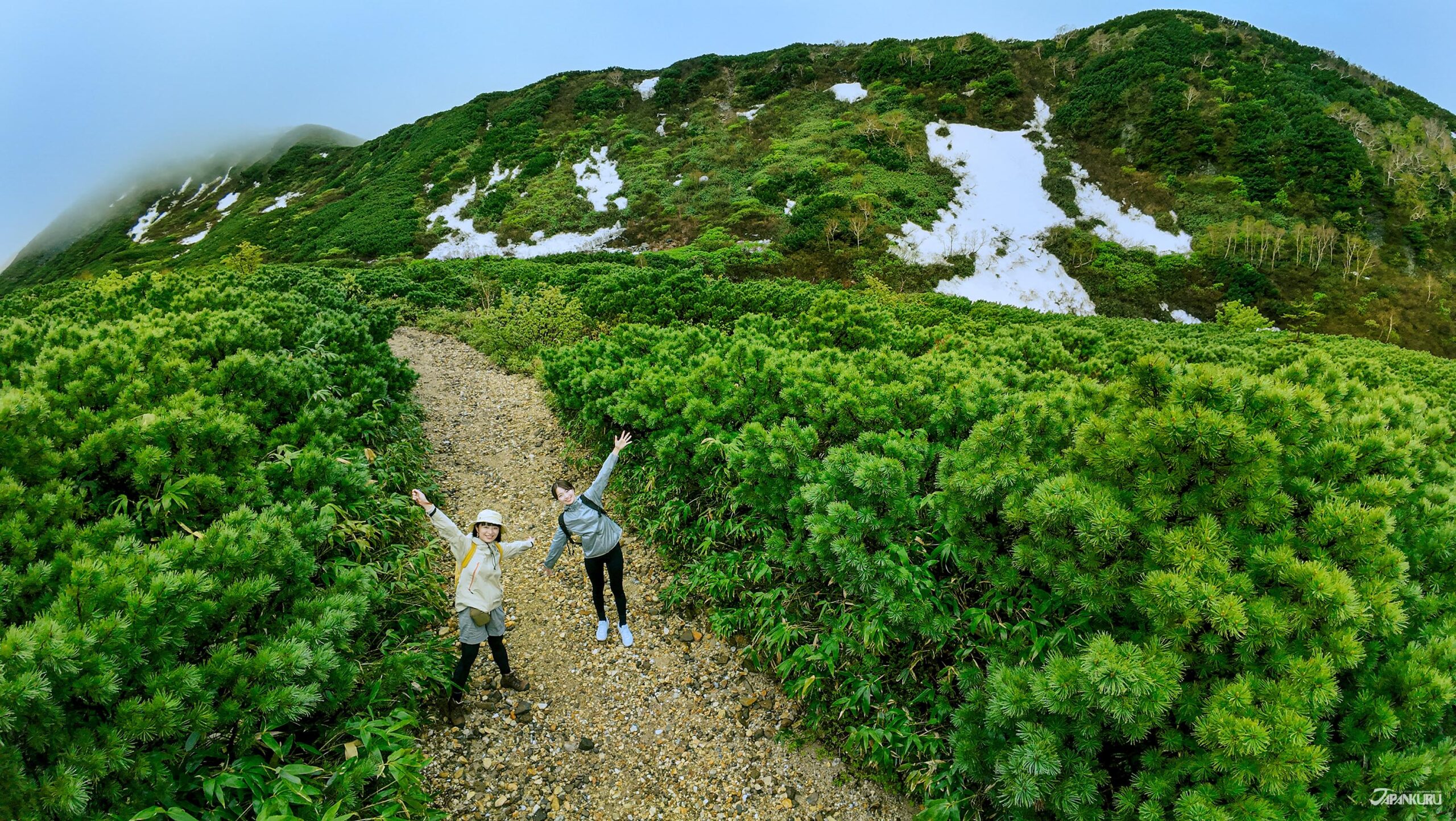
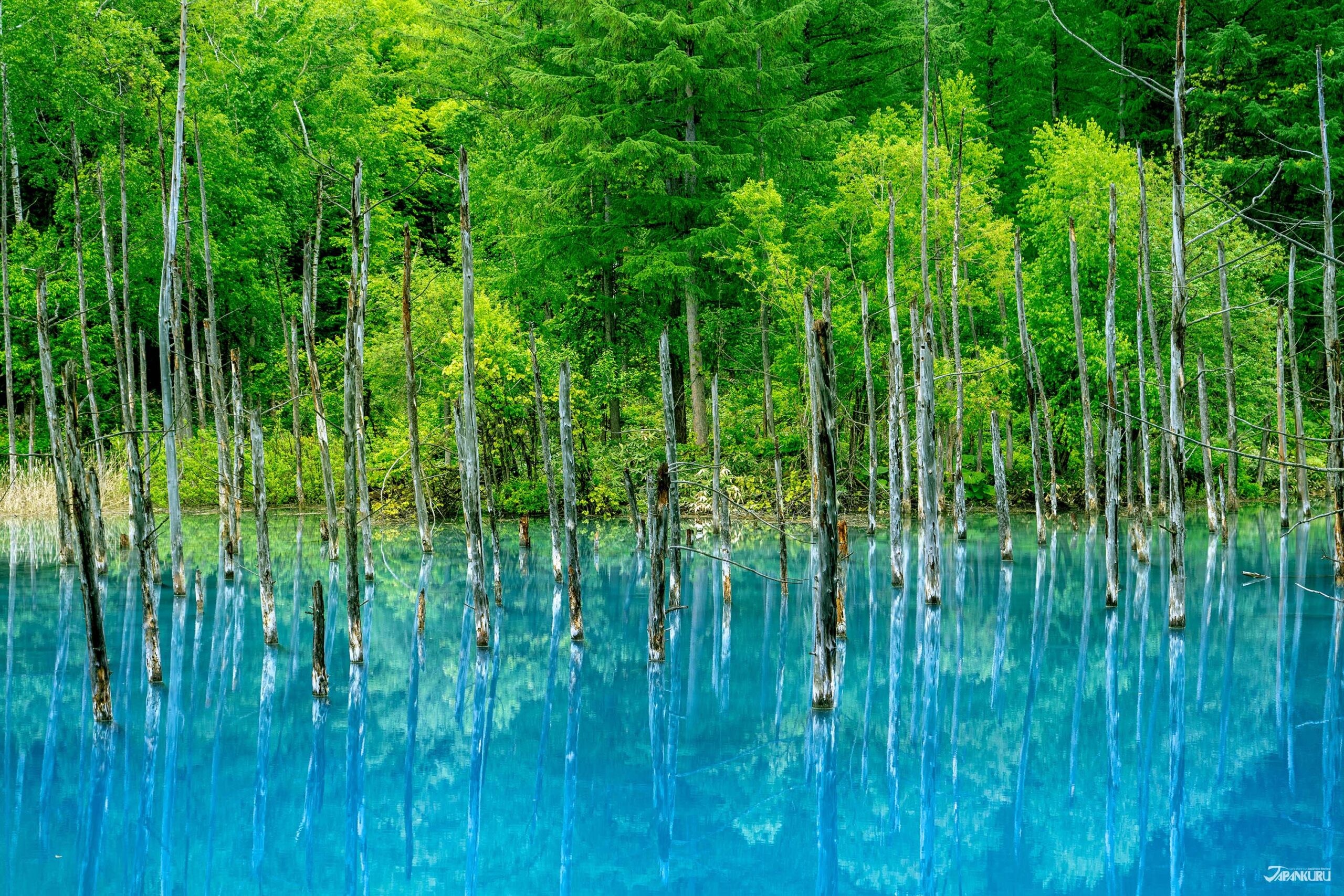
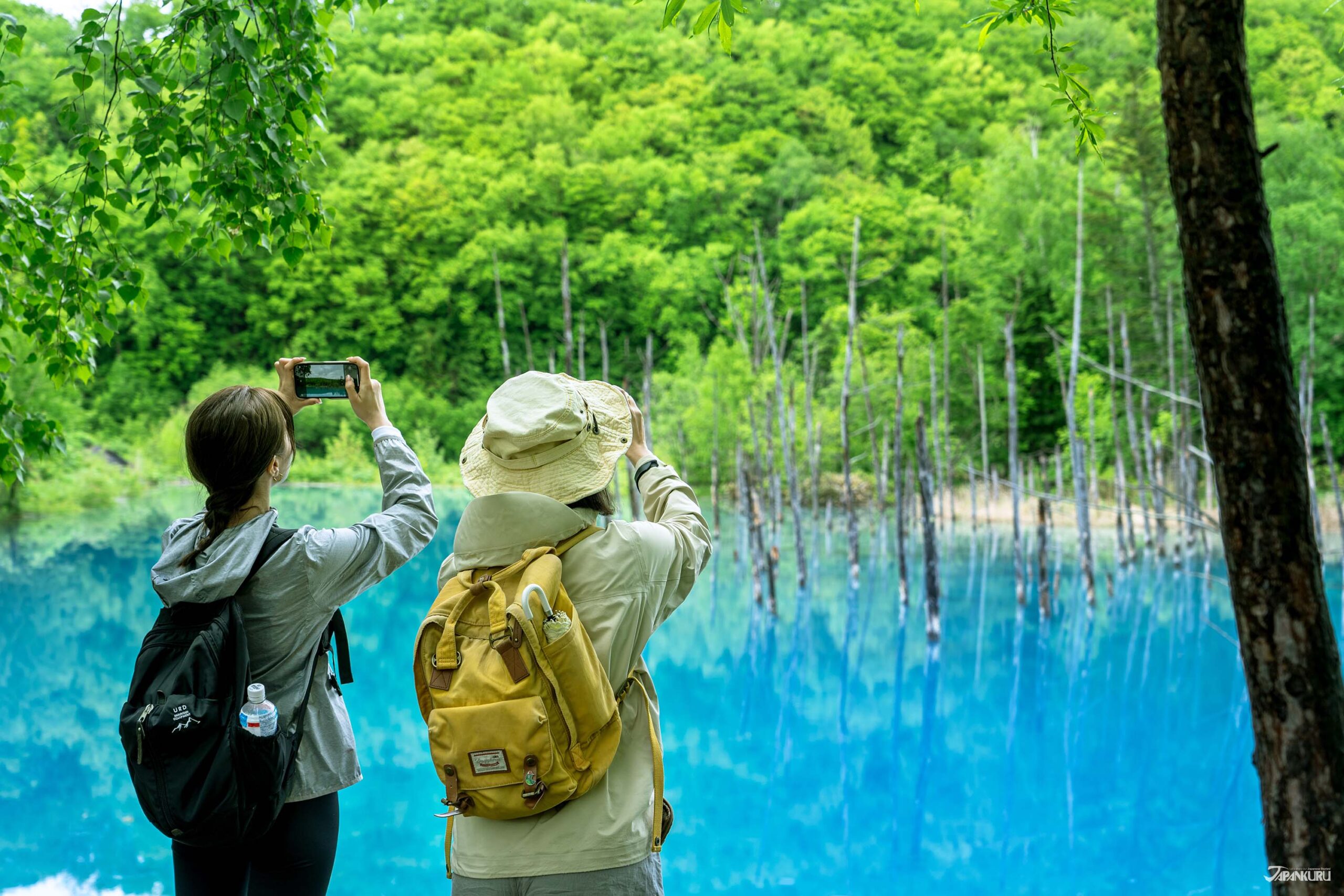
Top: Nukkakushi Crater Trail / Bottom: Aoi Ike
Japan is an island country created by the eruptions of countless volcanos over the millennia, so it’s no surprise that in Hokkaido you can get a sense of the dynamic energy of a real active volcano by climbing Mt. Tokachi (AKA Tokachi-dake). This active geothermal hotspot is a popular hiking destination, and we recommend the relatively easy hiking route through the mountainous landscape to a spot called Nukkakushi Crater. This short hike starting from Tokachidake Onsen only takes about an hour, which means that even sightseers with a packed schedule can easily enjoy the scenery along the way before arriving at Nukkakushi Crater, which has been volcanically active for 3,000 years! Back at the trailhead, Tokachidake Onsen offers luxurious hot spring baths, so many visitors like to embark on an early-morning hike and take a refreshing soak in the onsen before setting out to see other nearby sights.
After the hike and the hot springs, we recommend visiting the nearby Aoi Ike, which also goes by the name of Shirogane Blue Pond. As the name suggests, the waters of this body of water are a vivid shade of blue that looks photoshopped even in real life – a color produced by the dissolved aluminum of Shirokane Onsen mixing with local river water to produce small blue particles that disperse throughout the water. The spot is a favorite with photographers thanks to its out-of-this-world appearance, but we suggest seeing the beautiful blue waters with your own two eyes.
Tokachidake Onsen (十勝岳温泉) / Trailhead
Fukiage, Kamifurano, Sorachi District, Hokkaido
Aoi Ike / Shirogane Blue Pond (白金青い池)
Shirogane, Biei, Kamikawa District, Hokkaido
Take on the Role of TV Star at This Verdant Sightseeing Spot
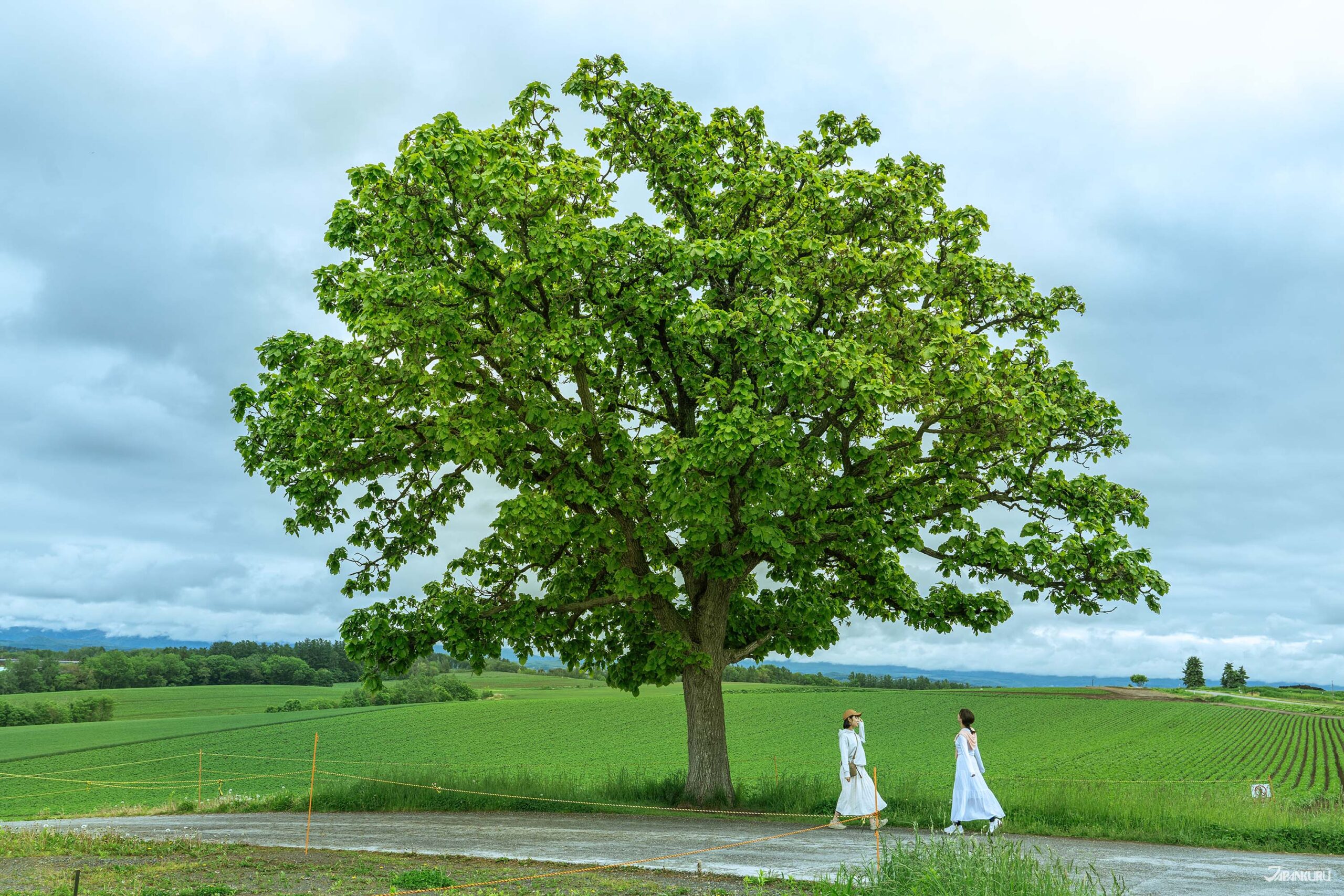
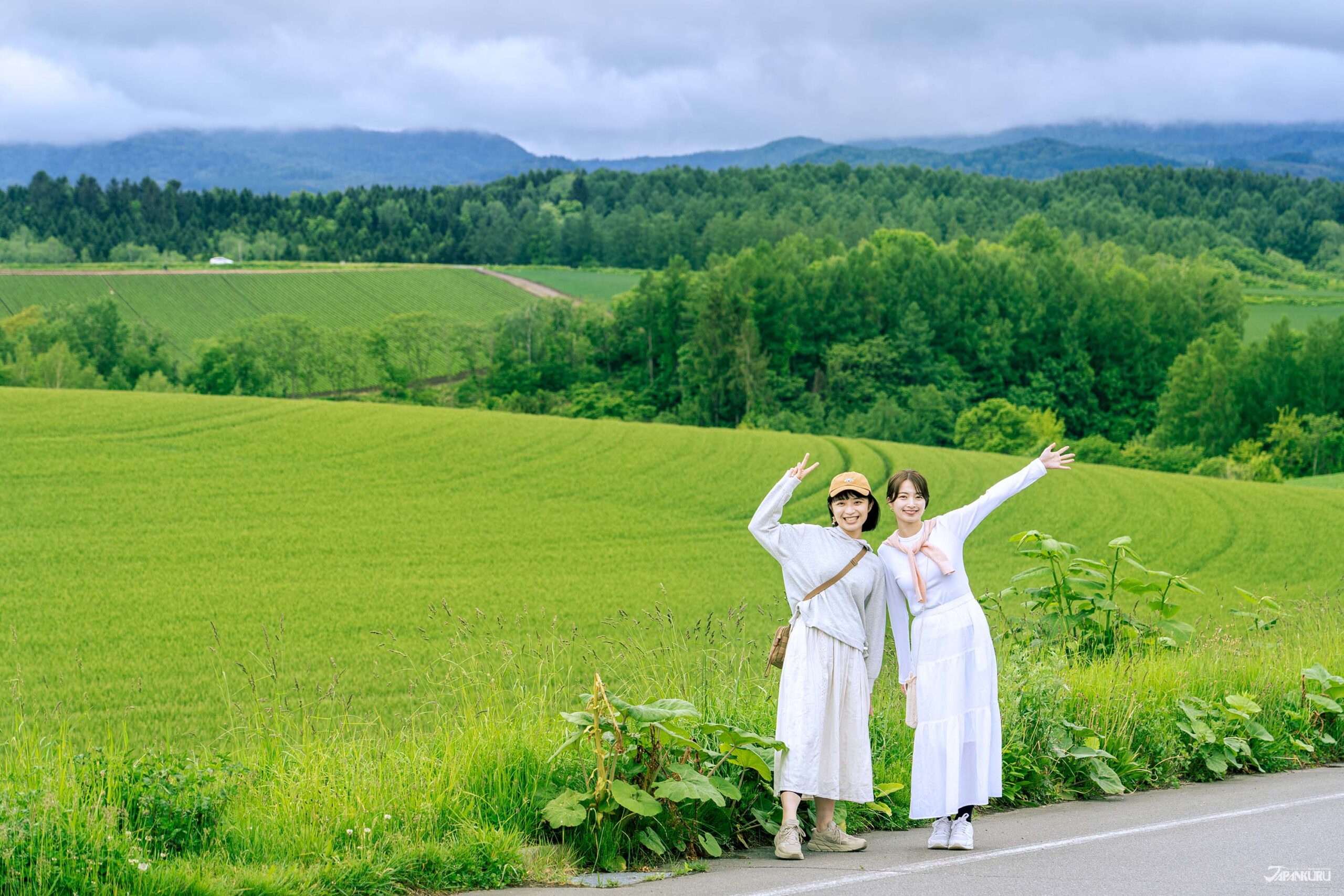
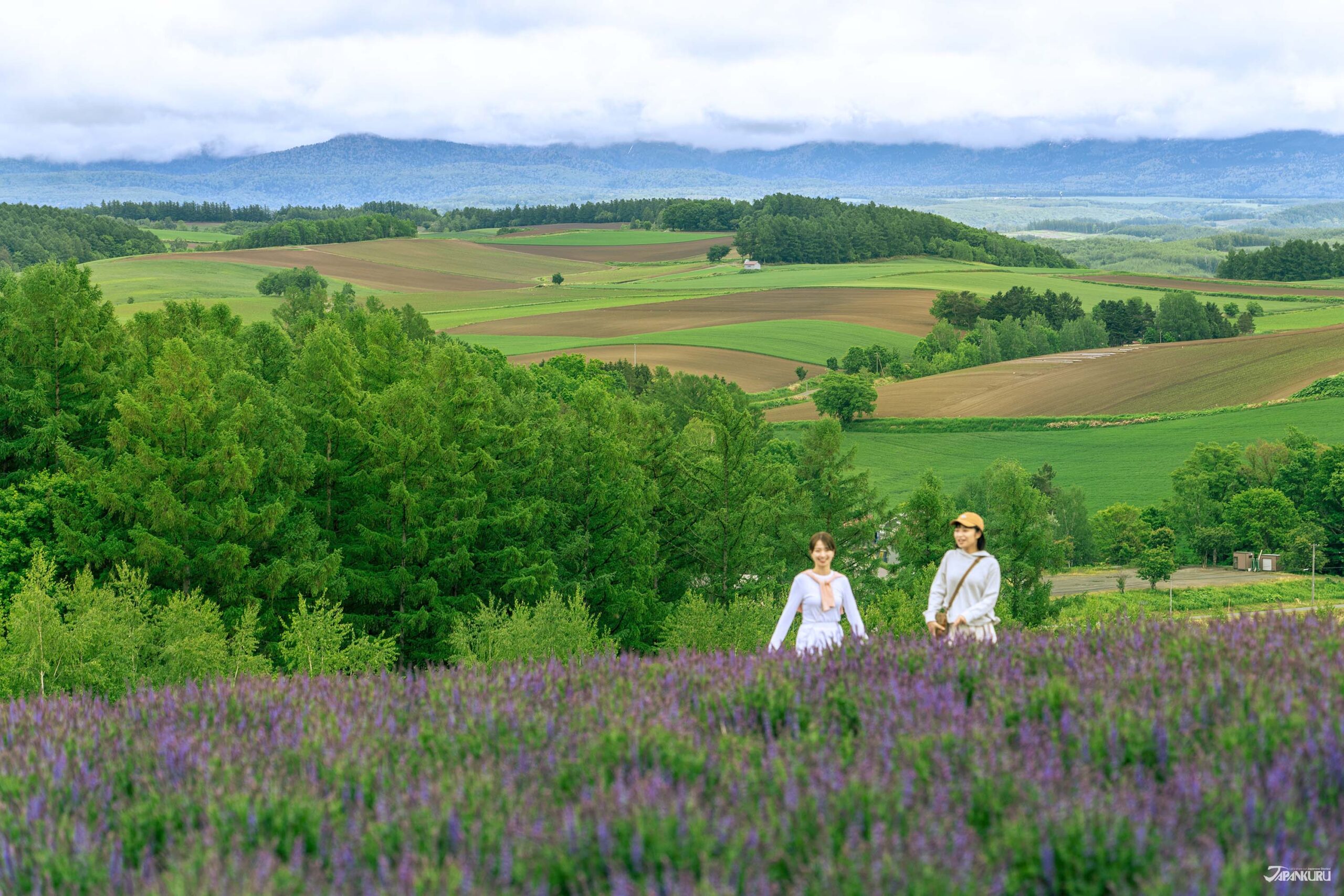
Top/Bottom Left: Seven Stars Tree / Bottom Right: Shikisai-no-oka
This large oak tree might not look like much to the average passer-by, but thanks to its use on the packaging and in commercials for the cigarette brand Seven Stars, it has become an icon and a local landmark in Hokkaido. The tall tree by the roadside, among the rolling hills of Hokkaido, has become a destination for photographers and sightseers acting out their own pretend TV commercials. Whether the landscape is covered in fresh green foliage or the pristine white snow of winter, there’s no denying the beauty of the bucolic scenery. (Just be careful not to trespass on the surrounding private property when you visit!)
Nearby, Shikisai-no-oka is a “panoramic flower garden” that boasts 15 hectares of flower-filled paradise, with dozens of different flowering plants that bloom from spring through autumn. Alongside the enormous flower garden, Shikisai-no-oka also has an alpaca farm with an alpaca petting zoo, plus restaurant facilities dishing up local fare made with seasonal Hokkaido ingredients. Shikisai-no-oka is open year-round, so even in the winter when the flowers are buried under snow, you can enjoy the winter scenery instead.
Seven Stars Tree (セブンスターの木)
Hokuei, Biei, Kamikawa District, Hokkaido
Shikisai-no-oka (四季彩の丘)
Shinsei Dai-3, Biei, Kamikawa District
Hours:
January ~ April: 9:10 – 17:00
May ~ October 8:40 – 17:00
June ~ September 8:40 – 17:30
November ~ December 9:10 – 16:30
Official Website (en)
Dine on Hokkaido’s Most Delightful Delicacies
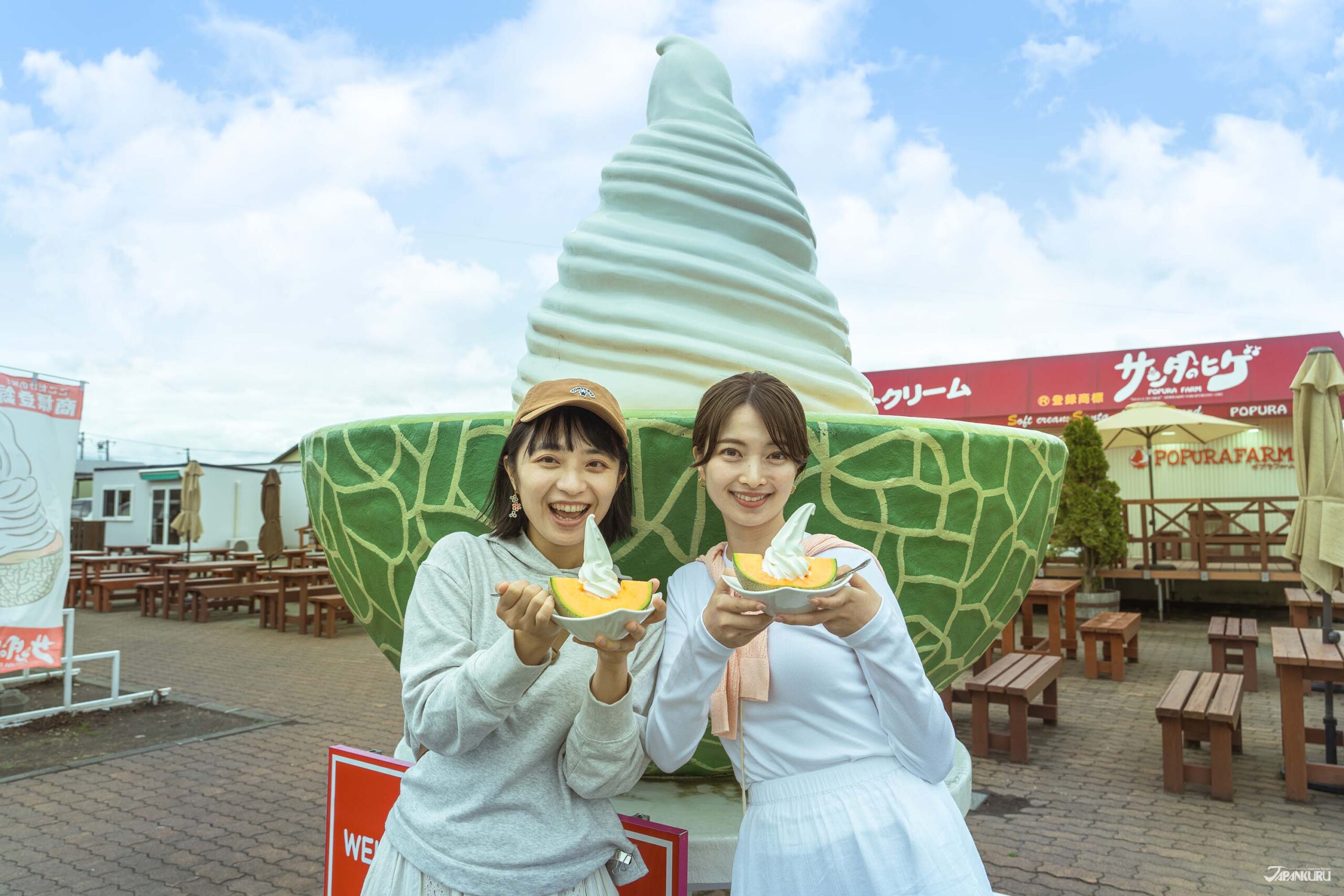
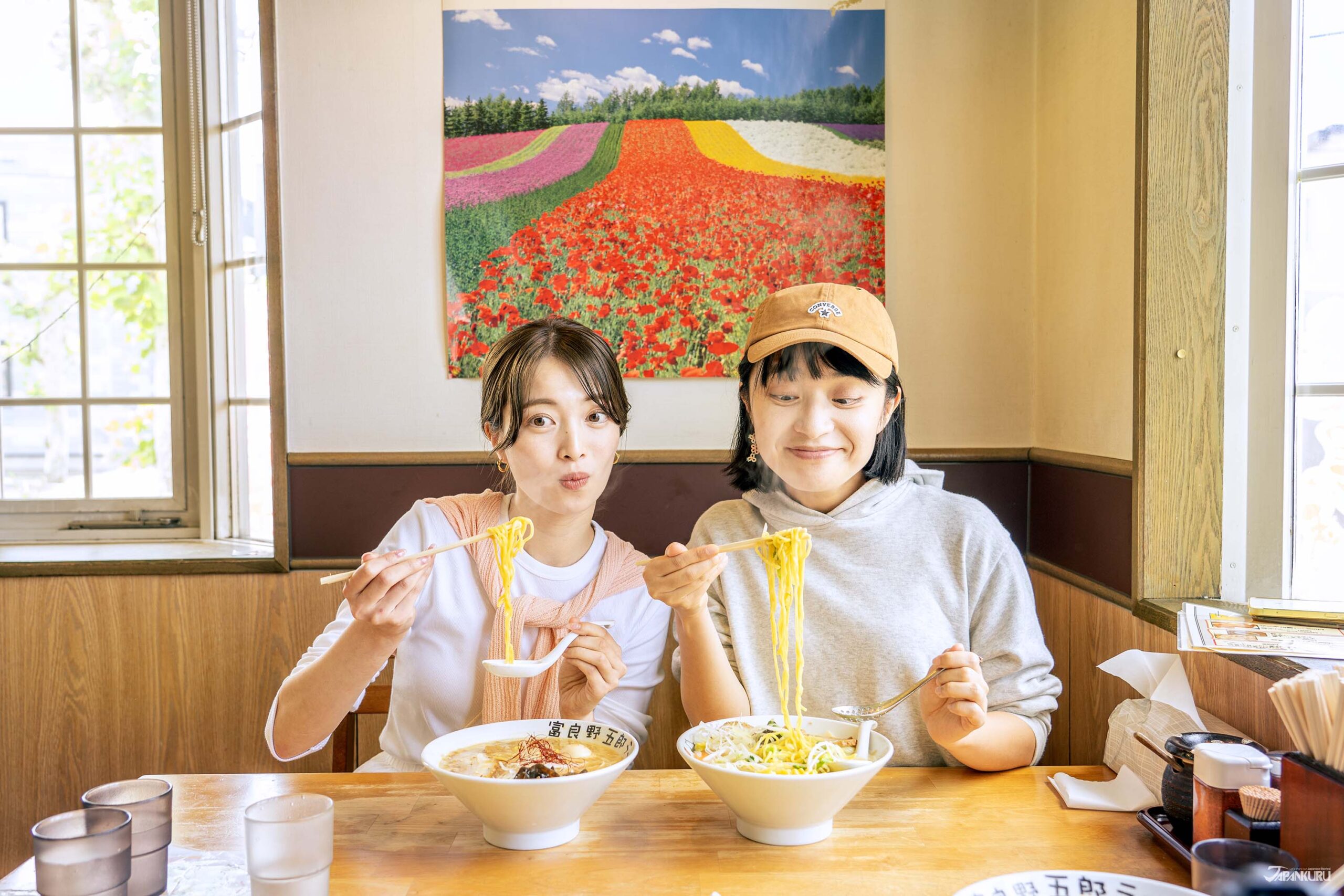
Japan loves to emphasize local ingredients, and Hokkaido is famous for its delicious local melons, so the area is full of mouth-wateringly fresh and sweet melon creations. If you can make it over to Popura Farm, you won’t want to miss their most famous treat, which consists of a generous dollop of creamy soft-serve ice cream inside a half-cut melon!
For more of a hearty meal, we recommend Furano Goro Ramen, which serves up steaming bowls of noodles in a rich, savory soup, topped with thick slices of roast Kamifurano pork. The broth comes in three flavors – miso, soy sauce, or salt – and they all go well with their popular karaage fried chicken, which can be ordered as a side. If you’re really hungry, it’s a great pairing!
Popura Farm Nakafurano (ポプラファーム 中富良野本店)
Nakafurano, Sorachi District, Hokkaido
Hours: 9:00 – 17:30 (last order 17:00)
Official Website (jp)
Furano Goro Ramen (富良野五郎ラーメン)
13-3 Wakamatsucho, Furano, Hokkaido
Hours: 11:00 – 21:00 (closed Wednesdays)
Official Website (jp)
Enjoy All the Charms of a Ferry Cruise on the Sunflower
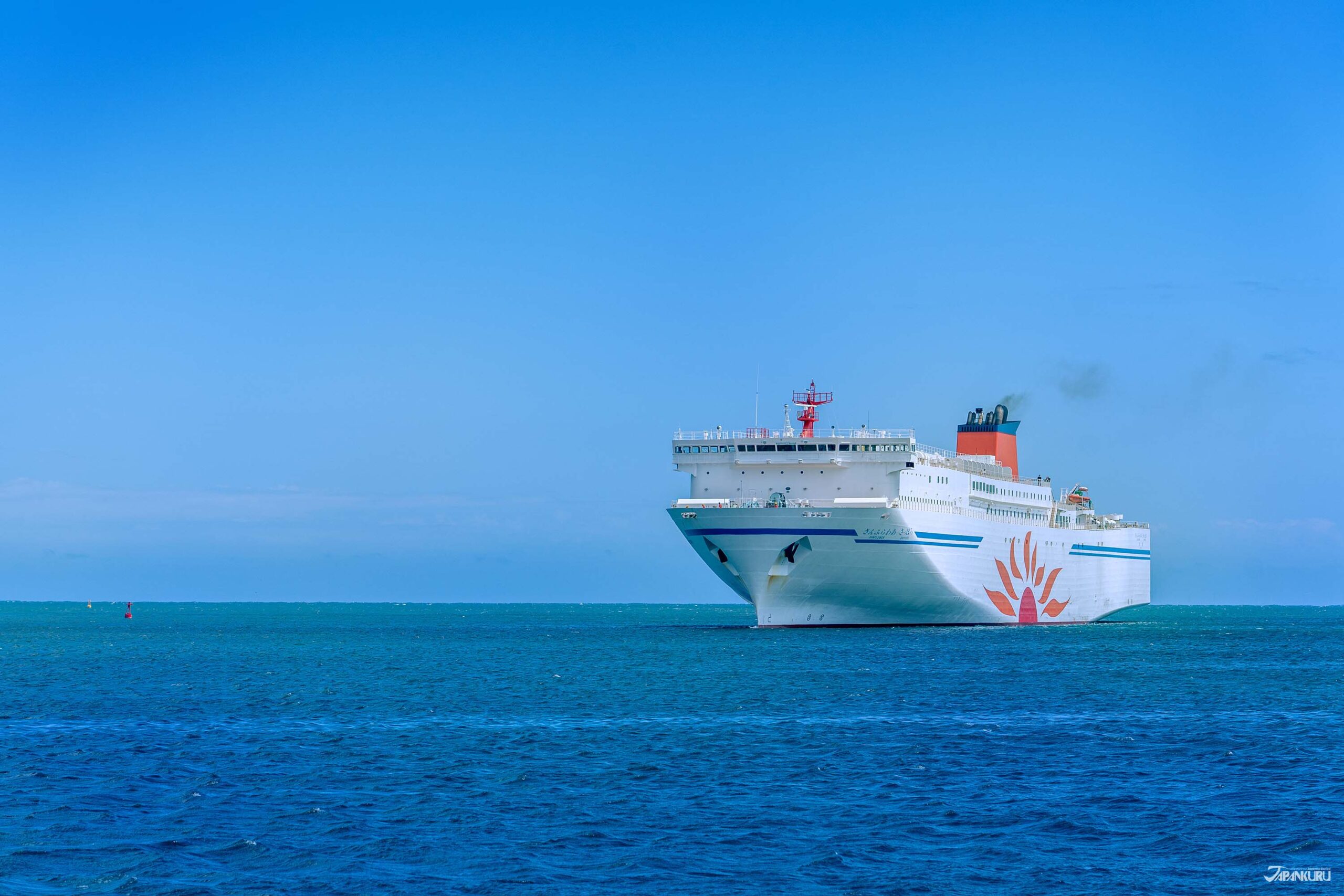
For most trips, getting from one place to another is the most exhausting part, but a ferry trip on the Sunflower can be a relaxing break instead! And now that you know the reservation process is just as easy as buying a plane ticket (if not easier), there’s no reason not to take the ferry to Hokkaido on your next trip to Japan! Relax on board this “moving hotel,” turn the transportation part of your trip into a day at the spa, and wake up to all that Hokkaido has to offer.
For more info and updates from Japan, check Japankuru for new articles, and don’t forget to follow us on X (Twitter), Instagram, and Facebook!





 >> Find out more at Japankuru.com! (link in bio)
#
>> Find out more at Japankuru.com! (link in bio)
#





 The Robot Restaurant is gone, but the Samurai Restaurant is here to take its place. Check it out, and don't forget your coupon!
The Robot Restaurant is gone, but the Samurai Restaurant is here to take its place. Check it out, and don't forget your coupon!
 신주쿠의 명소 로봇 레스토랑이 사무라이 레스토랑으로 부활! 절찬 쿠폰 발급중
신주쿠의 명소 로봇 레스토랑이 사무라이 레스토랑으로 부활! 절찬 쿠폰 발급중
 18歲以上才能入場的歌舞秀,和你想的不一樣!拿好優惠券去看看~
#tokyo #shinjuku #samurairestaurant #robotrestaurant #tokyotrip #도쿄여행 #신주쿠 #사무라이레스토랑 #이색체험 #할인이벤트 #歌舞伎町 #東京景點 #武士餐廳 #日本表演 #日本文化體驗 #japankuru #japantrip #japantravel #japanlovers #japan_of_insta
18歲以上才能入場的歌舞秀,和你想的不一樣!拿好優惠券去看看~
#tokyo #shinjuku #samurairestaurant #robotrestaurant #tokyotrip #도쿄여행 #신주쿠 #사무라이레스토랑 #이색체험 #할인이벤트 #歌舞伎町 #東京景點 #武士餐廳 #日本表演 #日本文化體驗 #japankuru #japantrip #japantravel #japanlovers #japan_of_insta
 코지마 x 빅 카메라 쿠폰으로 일본 가전 제품 쇼핑하기
#pr #japankuru #japanshopping #kojima #biccamera #japaneseskincare #yaman #dji #osmopocket3 #skincaredevice #日本購物 #美容儀 #相機 #雅萌 #日本家電 #일본여행 #면세 #여행꿀팁 #일본쇼핑리스트 #쿠폰 #일본쇼핑 #일본브랜드 #할인 #코지마 #빅카메라 #japankurucoupon
코지마 x 빅 카메라 쿠폰으로 일본 가전 제품 쇼핑하기
#pr #japankuru #japanshopping #kojima #biccamera #japaneseskincare #yaman #dji #osmopocket3 #skincaredevice #日本購物 #美容儀 #相機 #雅萌 #日本家電 #일본여행 #면세 #여행꿀팁 #일본쇼핑리스트 #쿠폰 #일본쇼핑 #일본브랜드 #할인 #코지마 #빅카메라 #japankurucoupon
































 Oita Hello Kitty Airport
Oita Hello Kitty Airport  Lands April 13th
Lands April 13th




